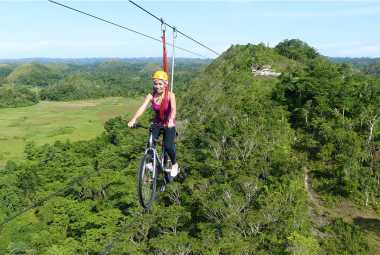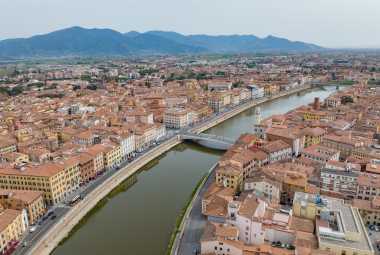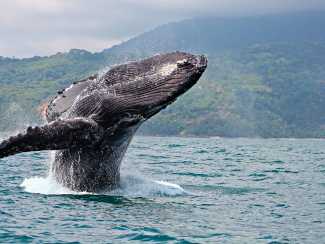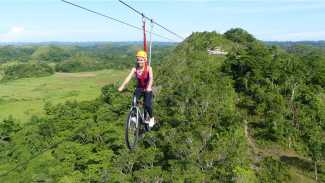Image by tourhub.co
*Vacation Mode is a for-profit site. It contains paid banner advertisements that are generated and managed by a third-party network. This site also includes relevant affiliate links (both in the content and on the sidebar) all of which we do our best to clearly mark as such.
Historical and Cultural Insights: Costa Rica vs Nicaragua
Costa Rica and Nicaragua, two neighboring countries in Central America, boast rich historical and cultural backgrounds that have shaped their identities. Exploring the historical and cultural insights of these nations provides invaluable context for travelers seeking to choose between them as their destination in 2024. Costa Rica, known as the "Rich Coast" due to its lush landscapes, has a unique history that differs from many other Latin American countries.
The colonization by the Spanish Empire left a profound impact on Costa Rica's culture. Unlike neighboring countries, Costa Rica did not possess great mineral wealth or large indigenous empires for the Spanish to exploit.
As a result, Costa Rica experienced less colonization and focused more on agriculture, particularly coffee production. This agricultural heritage is intertwined with the country's identity, shaping its peaceful mindset and commitment to sustainability.
On the other hand, Nicaragua has gone through a tumultuous history marked by colonialism, revolution, and political instability. The influences of both indigenous cultures and Spanish colonialism are deeply ingrained in Nicaraguan society.
From ancient civilizations such as the Mayangna and Miskito tribes to Spanish colonial architecture found in cities like Granada and León – Nicaragua proudly preserves its historical landmarks. Both countries boast distinct cultural traditions that are celebrated through music, dance, art, and cuisine.
In Costa Rica, folk dances like "El Punto Guanacasteco" showcase the country's cowboy traditions with vibrant costumes adorned with colorful ribbons. Similarly, Nicaragua showcases its vibrant culture through traditional dances like "El Güegüense," which blends indigenous elements with Spanish influences.
In terms of cuisine, both nations offer mouthwatering dishes rooted in their respective histories. Costa Rican cuisine presents flavorsome staples such as gallo pinto (rice and beans), casado (a platter consisting of rice, beans, meat or fish), ceviche (marinated seafood), all complemented by sweet tropical fruits.
In Nicaragua, dishes like nacatamal (a steamed corn dough filled with meat and vegetables) and vigorón (a combination of yuca, pork rind, and cabbage salad) reflect the country's diverse culinary traditions. Understanding the historical and cultural insights of Costa Rica and Nicaragua sets the stage for a memorable journey.
Costa Rica's agricultural heritage and commitment to sustainability have shaped its peaceful mindset, while Nicaragua's complex history has left an indelible mark on its culture. From traditional dances to mouthwatering cuisine, both nations offer a unique tapestry of experiences that will captivate any traveler seeking to immerse themselves in Central American wonders.
15 BEST Things to do in Costa Rica
Video by Before You Go
Exploring the rich history and unique cultural aspects of each country: Costa Rica
Costa Rica, known as the "rich coast," is a country brimming with history and culture. Its vibrant past can be traced back to pre-Columbian times when indigenous tribes like the Bribri, Boruca, and Guaymí inhabited the land.
The arrival of Spanish colonizers in the 16th century left an indelible mark on Costa Rican culture, blending European influences with indigenous traditions. The country's commitment to democracy and peace has shaped its identity as a forward-thinking nation.
One of Costa Rica's defining cultural aspects is its connection to nature. With almost 30% of its land protected as national parks or reserves, it's no wonder that environmental consciousness permeates every aspect of Costa Rican life.
From sustainable farming practices to eco-friendly tourism initiatives, Costa Ricans have made it their mission to preserve their natural heritage for future generations. Nicaragua:
Nicaragua boasts a captivating history deeply rooted in ancient civilizations, colonialism, and revolution. Before colonization by the Spanish in the 16th century, Nicaragua was home to powerful indigenous societies such as the Nahua people and Chorotega civilization.
Spanish influence left an indelible mark on Nicaraguan culture through language, religion, architecture, and cuisine. Nicaragua's more recent history is marked by political upheaval and revolution culminating in its independence from Spain in 1821.
This tumultuous past has shaped Nicaragua into a resilient nation with a strong sense of national pride. Today, visitors can delve into this rich history by exploring colonial cities like Granada or Leon with their beautifully preserved architecture dating back centuries.
Both countries share similarities when it comes to cultural diversity due to their Indigenous heritage and mestizo populations influenced by African diaspora. However, each possesses distinct traditions that set them apart: Nicaragua's traditional music and dance, including the lively Marimba rhythms, and Costa Rica's colorful festivals like the Día de los Diablitos celebrated by the indigenous Boruca people.
Both Costa Rica and Nicaragua offer fascinating historical narratives that provide insights into their cultural fabric. Whether one explores Costa Rica's commitment to sustainability or Nicaragua's resilience in the face of political challenges, visitors will undoubtedly be captivated by the profound richness of these countries' pasts.
14 SURREAL Places to Visit in Nicaragua
Video by Before You Go
Eco-Tourism and Sustainability Efforts
Eco-tourism and sustainability efforts play a crucial role in attracting visitors to both Costa Rica and Nicaragua. Known for their natural beauty and diverse ecosystems, these countries have implemented various initiatives to preserve their environments while offering unique experiences for travelers seeking sustainable tourism options. In Costa Rica, eco-tourism has been a focal point for decades, earning the country a reputation as a global leader in sustainable travel.
With over 25% of its land protected as national parks or reserves, Costa Rica offers an abundance of opportunities to explore its rich biodiversity. From hiking through lush rainforests to zip-lining over canopy trees, there are countless activities that allow visitors to immerse themselves in nature while minimizing their impact on the environment.
Costa Rica's commitment to sustainability extends beyond protected areas. The country has made significant strides in renewable energy production, with more than 98% of its electricity coming from renewable sources such as hydroelectric power, wind turbines, and geothermal energy.
Additionally, eco-lodges and hotels adhere to strict environmental standards, incorporating sustainable practices into their operations. This includes using renewable energy sources, practicing water conservation methods, and supporting local communities through responsible tourism initiatives.
Similarly, Nicaragua has increasingly embraced eco-tourism and sustainability efforts in recent years. With stunning landscapes ranging from volcanic peaks to pristine beaches along the Pacific coast and Caribbean Sea, there is no shortage of natural wonders for travelers to enjoy.
The government has taken steps towards conservation by designating protected areas such as national parks and biosphere reserves. Nicaragua's focus on sustainable tourism can be seen through community-based initiatives that empower local communities while preserving the environment.
Travelers have the opportunity to support projects that promote cultural preservation and sustainable livelihoods for indigenous populations. Additionally, eco-lodges within these communities provide unique accommodations where guests can experience traditional customs while enjoying stunning surroundings.
Both countries showcase impressive commitments towards protecting their natural resources; however, it is worth noting that Costa Rica has a longer-standing reputation and infrastructure for eco-tourism. Nevertheless, Nicaragua's emerging efforts provide travelers with an opportunity to explore less crowded areas and contribute directly to local communities.
Both Costa Rica and Nicaragua have made significant strides in eco-tourism and sustainability efforts. Costa Rica stands out as a well-established leader in sustainable travel, with its extensive protected areas network and commitment to renewable energy.
On the other hand, Nicaragua offers a unique experience for travelers seeking off-the-beaten-path adventures while supporting community-based initiatives. Ultimately, the choice between these two countries depends on individual preferences and priorities when it comes to eco-tourism and sustainability.
Comparing the eco-friendly practices and sustainable tourism initiatives in both countries.
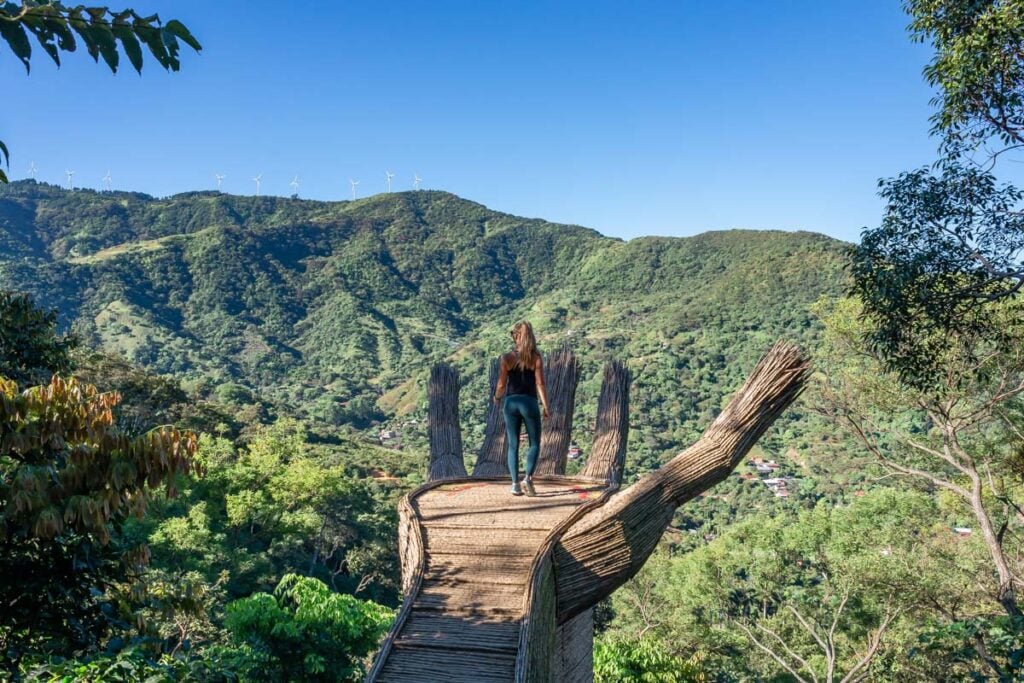
Costa Rica and Nicaragua are both renowned for their commitment to eco-friendly practices and sustainable tourism initiatives. While each country has its own unique approach, they share a common goal of preserving the natural beauty and biodiversity that attracts tourists from around the world. In Costa Rica, eco-tourism has been a major focus for several decades.
The country boasts an impressive percentage of protected land, with over 25% of its territory falling under national parks, wildlife refuges, and biological reserves. This dedication to conservation has earned Costa Rica a reputation as a global leader in sustainable tourism.
The government actively promotes responsible tourism practices, encouraging visitors to support local communities and respect the environment. Nicaragua, on the other hand, is gradually emerging as an eco-tourism destination with immense potential.
Although it may not have the same level of infrastructure and recognition as Costa Rica in this realm, it offers pristine landscapes and unique natural wonders that rival any tourist attraction in Central America. Nicaragua’s commitment to sustainability is growing steadily, with numerous eco-lodges and community-based initiatives popping up across the country.
In terms of specific initiatives promoting sustainability in Costa Rica versus Nicaragua, there are notable differences. Costa Rica's well-established certification program for sustainable tourism (CST) ensures that businesses adhere to strict guidelines related to environmental impact reduction, community engagement, cultural preservation, waste management, energy efficiency, and more.
This program provides tourists with reassurance that their visit supports environmentally responsible practices. Meanwhile, Nicaragua's efforts primarily revolve around community-based tourism projects that aim to empower local communities while preserving natural resources.
These initiatives often involve collaboration between indigenous groups or rural communities and external organizations or investors interested in promoting sustainable development in these areas. While both countries have made commendable strides towards sustainability and eco-friendly practices in recent years, it should be noted that challenges still exist.
In some regions of Nicaragua or less popular tourist destinations off the beaten path may have limited access to resources or face obstacles in implementing sustainable practices. Additionally, the ongoing economic, political, and social factors in Nicaragua may impact the pace of progress in certain areas.
Costa Rica and Nicaragua are both dedicated to eco-friendly practices and sustainable tourism. Costa Rica's well-established infrastructure and recognized certification programs make it a popular choice for tourists seeking a destination with a proven track record in conservation efforts.
In comparison, Nicaragua's evolving focus on community-based initiatives offers a unique opportunity for visitors to directly contribute to local development while exploring its natural wonders. Ultimately, choosing between Costa Rica and Nicaragua will depend on individual preferences and priorities when it comes to eco-tourism and sustainable tourism initiatives.
Local Communities and Social Impact
When considering a trip to either Costa Rica or Nicaragua, it is important to assess the impact of tourism on local communities and the social dynamics within these countries. Both nations have unique cultural heritage and local communities that play a significant role in shaping the overall experience for visitors. In Costa Rica, tourism has had a profound impact on local communities, particularly in areas such as Manuel Antonio and Monteverde.
These communities have seen a rise in infrastructure development, employment opportunities, and an increased standard of living for residents. The growth of sustainable tourism practices has also led to initiatives that benefit local communities directly.
For example, many eco-lodges and tour operators actively engage with neighboring villages by employing locals, purchasing locally sourced products, and supporting community development projects. Similarly, Nicaragua has witnessed a surge in tourism over recent years.
While it may not be as developed as Costa Rica's tourism industry, this presents an opportunity for travelers seeking authentic experiences off the beaten path. In places like Granada and Leon, tourists can interact with locals through cultural activities such as cooking classes or volunteering opportunities.
By participating in these activities, visitors not only gain insight into Nicaraguan customs but also contribute to the socio-economic well-being of these communities. However, it is essential to address the issue of safety when discussing local communities in both countries.
Costa Rica has long been hailed as one of the safest Central American countries for tourists due to its stable democratic government and effective tourist police force. On the other hand, Nicaragua has experienced political unrest in recent years which resulted in fluctuations regarding safety concerns for travelers.
It is advisable for tourists to stay updated on travel advisories from their respective governments before making any plans. Both Costa Rica and Nicaragua offer opportunities for visitors to engage with local communities and understand their social impact firsthand.
While Costa Rica's established tourism industry provides more extensive support systems for sustainable community development initiatives, Nicaragua offers a unique chance to explore emerging tourism destinations and contribute to the socio-economic growth of local communities. Travelers should consider their own preferences, safety concerns, and desire for authenticity when choosing between these two countries.
Understanding how tourism impacts local communities in Costa Rica and Nicaragua.
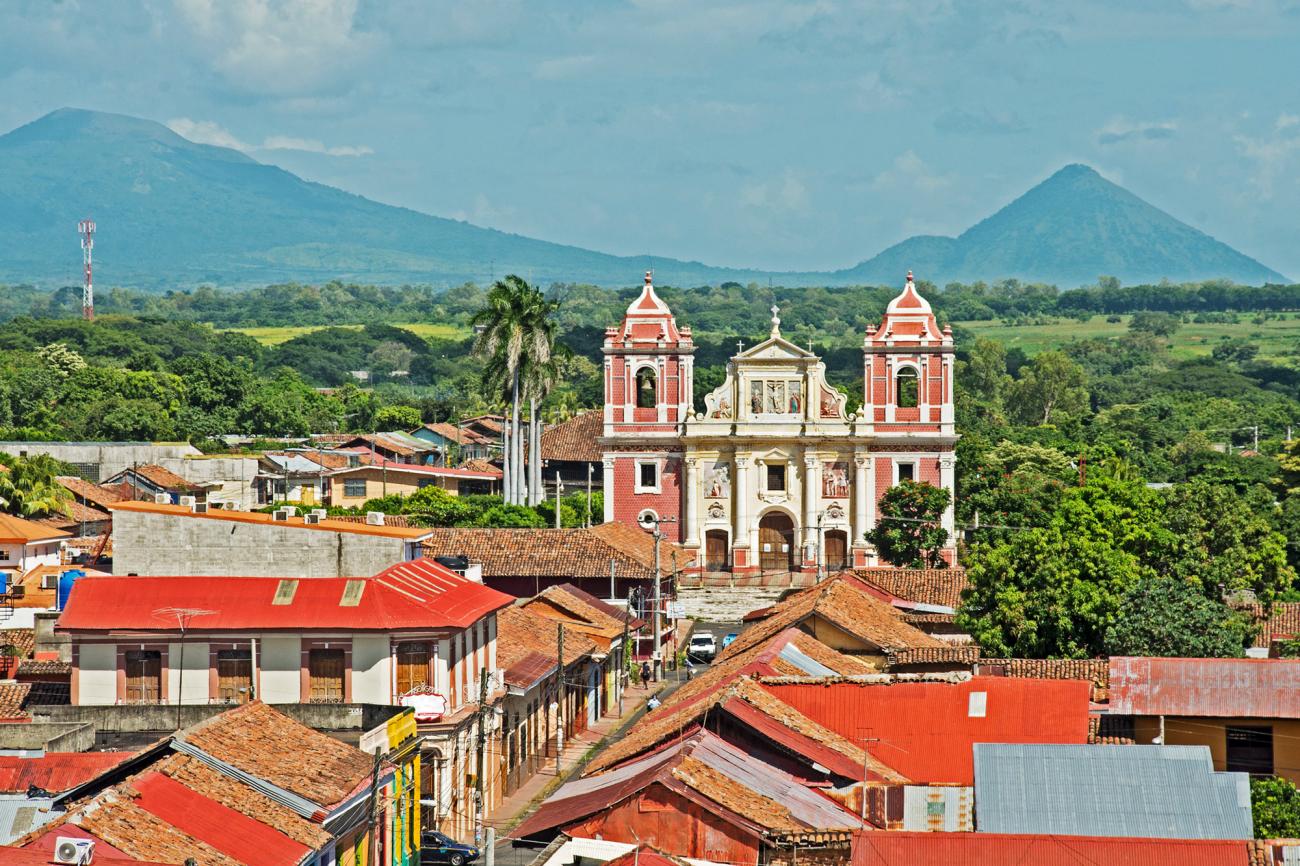
Tourism has a significant impact on the local communities of both Costa Rica and Nicaragua. In Costa Rica, the tourism industry has played a crucial role in improving the socio-economic conditions of many communities. The development of tourist infrastructure, such as hotels, restaurants, and tour operators, has provided job opportunities for locals.
Additionally, this industry has stimulated the growth of various support services like transportation, construction, and agriculture. In contrast, Nicaragua is still emerging as a tourist destination but shows great potential for community development through tourism.
The country's stunning natural beauty and cultural heritage attract travelers seeking authentic experiences. As tourism grows in Nicaragua, local communities are gradually benefiting from employment opportunities as guides, artisans, and service providers.
This has led to an increase in income levels and improved living standards for some communities. However, it is essential to acknowledge that there can be negative impacts on local communities as well.
In both Costa Rica and Nicaragua, there have been instances where large-scale tourism development projects have disrupted traditional ways of life or caused environmental degradation. It is crucial for sustainable tourism practices to be adopted to minimize these negative effects.
Communities in both countries are actively involved in promoting responsible tourism practices that prioritize social inclusivity and environmental preservation. Community-based tourism initiatives have gained popularity in recent years as they allow visitors to directly interact with locals while generating income for small-scale businesses within these communities.
Overall, while tourism undoubtedly brings economic benefits to local communities in both Costa Rica and Nicaragua by creating employment opportunities and stimulating economic growth; it is crucial that sustainable practices are implemented to ensure long-term positive impacts without compromising cultural heritage or harming the environment.
Adventure Sports and Outdoor Activities
Costa Rica and Nicaragua both offer a plethora of exhilarating adventure sports and outdoor activities for thrill-seekers and nature enthusiasts alike. In Costa Rica, one can indulge in exciting options such as zip-lining through lush rainforests, canyoning down waterfalls, or white-water rafting in the raging rapids of the country's stunning rivers.
The diverse topography of Costa Rica provides ample opportunities for hiking, mountain biking, and ATV tours, allowing visitors to explore its volcanoes, cloud forests, and picturesque national parks. Nicaragua also boasts an array of adrenaline-pumping activities that cater to adventurers.
One standout attraction is volcano boarding on Cerro Negro near León - a unique experience where travelers slide down the steep slopes of an active volcano on specially designed boards. Surfing enthusiasts will find themselves in paradise along Nicaragua's Pacific coast with world-class breaks such as Playa Maderas or Popoyo.
Additionally, kayaking through the intricate network of rivers in the Indio Maíz Biological Reserve offers an unforgettable encounter with pristine nature. For those seeking underwater adventures, both countries provide outstanding options for scuba diving and snorkeling.
The coral reefs off Costa Rica's Caribbean coast are teeming with vibrant marine life, including sea turtles and exotic fish species like parrotfish and angelfish. On the other hand, Little Corn Island in Nicaragua offers pristine turquoise waters perfect for exploring mesmerizing coral formations while swimming alongside rays and sharks.
Furthermore, nature lovers should not miss out on Costa Rica's renowned guided wildlife tours that allow visitors to spot majestic creatures like sloths, howler monkeys, toucans, quetzals (the resplendent bird), and even jaguars if they're lucky enough. In contrast, Nicaragua presents opportunities for eco-trekking through dense jungles or taking boat trips along Lake Nicaragua to witness stunning bird migrations involving hundreds of species.
Both Costa Rica and Nicaragua offer a wide range of adventure sports and outdoor activities to cater to all levels of experience and interests. Whether you're an adrenaline junkie or simply appreciate the beauty of nature, these countries are bound to leave you awe-inspired and yearning for more.
A detailed look at the adventure sports and outdoor activities available in each country.

Adventure enthusiasts seeking a thrilling experience will find an abundance of options in both Costa Rica and Nicaragua. Costa Rica, known for its diverse topography and lush rainforests, offers a wide array of adventure sports and outdoor activities that cater to adrenaline junkies. One can explore the dense jungles through exhilarating zip-lining tours, where they can glide through treetop canopies with stunning views of the surrounding landscape.
Additionally, white-water rafting in the rapids of the Pacuare River provides an unforgettable adrenaline rush. For those seeking a unique experience, surfing along Costa Rica's Pacific coastline is a well-known attraction that draws surfers from around the globe.
Nicaragua, on the other hand, may be lesser-known as an adventure destination but has been gaining recognition for its exciting offerings. The country's volcanic landscapes present excellent opportunities for volcano boarding—a thrilling activity where participants slide down active volcanoes on specially designed boards.
Cerro Negro volcano near León is particularly famous for this heart-pumping adventure sport. Nicaragua also boasts incredible opportunities for hiking and trekking adventures.
The Mombacho Volcano Nature Reserve offers hiking trails that lead to stunning viewpoints overlooking Lake Nicaragua and Granada city. For nature lovers looking to immerse themselves in water-based activities, both countries offer rich opportunities for scuba diving and snorkeling in their pristine coastal regions.
Costa Rica's Pacific coast offers vibrant coral reefs teeming with marine life just off the shores of popular beach towns like Manuel Antonio and Tamarindo. Likewise, Nicaragua's Corn Islands are renowned for their crystal-clear waters and vibrant coral reefs, making them perfect destinations for underwater exploration.
Both Costa Rica and Nicaragua provide ample options for adventure sports and outdoor activities that cater to various interests and skill levels. Whether it's ziplining through rainforests or volcano boarding down active volcanoes in Nicaragua or surfing along Costa Rica's picturesque coastlines, thrill-seekers are sure to find their fill of excitement in either country.
Wildlife Diversity and Conservation
Costa Rica and Nicaragua are both renowned for their incredible biodiversity and commitment to wildlife conservation. Each country offers unique opportunities for nature enthusiasts to explore diverse ecosystems and encounter a wide array of fascinating species.
In Costa Rica, the country's commitment to preserving its natural heritage is evident in its extensive national park system. With over 25% of its land protected as national parks, Costa Rica boasts an impressive variety of habitats, including rainforests, cloud forests, mangroves, and coastal areas.
Visitors have the chance to spot iconic wildlife such as sloths, monkeys, toucans, jaguars, and an astonishing array of bird species. The world-famous Monteverde Cloud Forest Reserve is a prime location for birdwatching enthusiasts with over 400 species recorded within its boundaries.
Moreover, Tortuguero National Park on the Caribbean coast provides a critical nesting site for endangered sea turtles. Similarly, Nicaragua's vast landscapes offer an abundance of natural wonders.
From lush rainforests to volcanic peaks and pristine beaches along the Pacific coast and Caribbean Sea, this country has much to offer in terms of wildlife diversity. In Reserva Natural Miraflor located in northern Nicaragua's highlands, visitors can explore various ecosystems teeming with unique flora and fauna such as orchids, quetzals (a colorful bird), hummingbirds, howler monkeys and more.
Additionally, the Indio Maíz Biological Reserve remains one of Central America's largest tropical rainforests that serves as a sanctuary for rare species like jaguars and tapirs. Both countries actively promote conservation efforts through sustainable tourism practices.
In Costa Rica's Osa Peninsula lies Corcovado National Park which stands out as one of the most biologically diverse places on Earth according to National Geographic Magazine. This protected area also utilizes eco-lodges that adhere to sustainable principles by minimizing their environmental impact while providing tourists with comfortable accommodations.
Nicaragua has also made significant progress in increasing its protected areas, establishing reserves such as the Bosawás Biosphere Reserve and Cerro Silva Natural Reserve. These initiatives contribute to both countries' long-term commitment to preserving their natural heritage for future generations.
Costa Rica and Nicaragua are nature lovers' paradises, offering an incredible range of wildlife diversity and conservation efforts. Whether you choose to explore the diverse ecosystems of Costa Rica or venture into Nicaragua's lesser-known wilderness, both countries provide ample opportunities for unforgettable encounters with unique flora and fauna.
Comparing the efforts and success in wildlife conservation and diversity in both countries.

When it comes to wildlife conservation and diversity, both Costa Rica and Nicaragua have made significant efforts, but they differ in terms of their approaches and the success of their initiatives. Costa Rica, often touted as a global leader in eco-tourism, has implemented stringent measures to protect its diverse ecosystems.
The country boasts an impressive network of national parks and protected areas, which cover approximately 25% of its landmass. These protected areas serve as crucial habitats for a wide variety of flora and fauna, including colorful toucans, elusive jaguars, and vibrant orchids.
Costa Rica's commitment to conservation is further demonstrated by its well-established system of biological corridors that facilitate the movement of wildlife between different protected areas. These corridors help mitigate the negative impacts caused by habitat fragmentation due to human activities.
Additionally, Costa Rica has been successful in implementing sustainable tourism practices that aim to minimize the ecological footprint while maximizing visitors' experience. On the other hand, Nicaragua is still in the process of developing its wildlife conservation efforts but shows great potential.
The country is blessed with rich biodiversity thanks to its diverse landscapes encompassing rainforests, volcanoes, lakes, and stunning coastlines. Nicaraguan authorities have started taking steps towards preserving their natural heritage by establishing national parks like Indio Maíz Biological Reserve and Bosawás Biosphere Reserve.
However, challenges related to funding limitations and infrastructure development have hindered Nicaragua's progress compared to its neighbor Costa Rica. Nevertheless, there are several community-led projects focused on protecting endangered species such as sea turtles along Nicaragua's Pacific coast.
These initiatives provide locals with alternative livelihoods through responsible tourism while contributing to conservation efforts. While Costa Rica has an edge over Nicaragua regarding established wildlife conservation measures due to years of focused effort and investment in eco-tourism infrastructure development, Nicaragua is gradually catching up with its own unique initiatives that involve local communities actively participating in safeguarding their natural wonders.
Cuisine and Culinary Experiences
When it comes to cuisine and culinary experiences, both Costa Rica and Nicaragua offer a delightful array of flavors and dishes that showcase their rich cultural heritage. From street food to fine dining, these countries cater to every palate with their unique regional specialties. In Costa Rica, gastronomy reflects the country's commitment to fresh, sustainable ingredients.
The official language of Costa Rica is Spanish, but you'll find that the language of food is universal. One of the most beloved dishes is gallo pinto, a breakfast staple consisting of rice and beans cooked together with onions, bell peppers, and spices.
Served with eggs, fried plantains, and sour cream or Lizano sauce – a tangy condiment ubiquitous in Costa Rican cuisine – it's a hearty way to start your day. Another must-try dish in Costa Rica is casado.
This traditional lunchtime meal typically includes rice, black beans, plantains, salad, and a choice of protein such as grilled chicken or fish. It's a well-balanced plate that showcases the simplicity and freshness of local ingredients.
On the other hand, Nicaragua's culinary scene offers its own distinct flavors that are worth exploring. While Nicaragua may not be as widely known for its cuisine as Costa Rica or other Central American countries like Mexico or Guatemala - Nicaragua has something unique to offer.
Local delicacies include vigorón - a flavor-packed combination of boiled yuca (cassava), pickled cabbage slaw (curtido), and crispy chicharrones (fried pork belly). This dish perfectly balances textures and flavors for an explosion in every bite.
For seafood enthusiasts visiting Nicaragua's coastal regions such as San Juan del Sur or Corn Islands - indulge in el güirila de maíz con queso. This dish consists of corn tortillas filled with melted cheese served alongside curtido or pickled vegetables.
The combination of sweet corn masa mixed with savory cheese creates an addictive flavor profile. Both Costa Rica and Nicaragua have a vibrant street food culture, offering delicious treats like empanadas, tamales, and ceviche - each with its own regional twist.
Don't forget to explore the local markets where fresh fruits like mangoes, papayas, and pineapples abound. Whether you choose Costa Rica or Nicaragua for your culinary adventure, prepare to be amazed by the flavors and techniques that define these countries' gastronomic traditions.
Delving deeper into the food culture, including street food, local delicacies, and fine dining experiences.
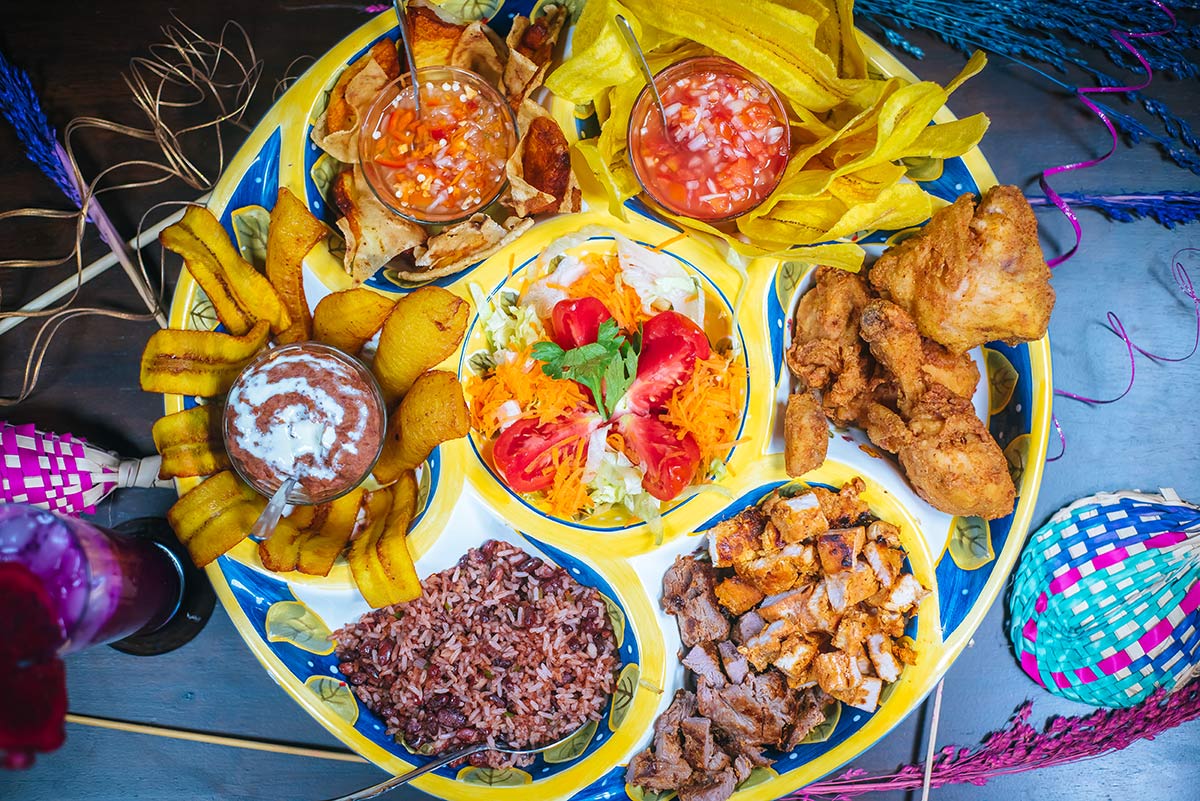
Delving Deeper into the Food Culture: Costa Rica and Nicaragua both boast vibrant food cultures that reflect their unique histories, geographical landscapes, and local ingredients. When it comes to street food, both countries offer a myriad of delicious options that will tantalize your taste buds.
In Costa Rica, don't miss out on the iconic "casado," a plate consisting of rice, beans, plantains, salad, and your choice of protein such as chicken or fish. This flavorful dish is a staple in Costa Rican cuisine and can be found at numerous street vendors across the country.
Additionally, make sure to try "empanadas" filled with cheese or meat for a quick and satisfying snack. In contrast, Nicaragua's street food scene is equally enticing.
Sample the "nacatamal," a traditional Nicaraguan tamale made with corn masa dough filled with seasoned pork or chicken wrapped in banana leaves. The combination of flavors will transport you to the heart of Nicaraguan culture.
If you're feeling adventurous, indulge in some "vigorón," which consists of yuca (cassava), chicharrones (fried pork rinds), and cabbage slaw topped off with tangy vinegar sauce. For those seeking finer dining experiences, both countries offer an array of options that cater to various tastes.
In Costa Rica's capital city of San Jose, travelers can find upscale restaurants serving international cuisine alongside traditional dishes with a contemporary twist. Seafood lovers should try the "ceviche de corvina," featuring fresh sea bass marinated in lime juice with onions and cilantro—a refreshing delight for warm tropical evenings.
Nicaragua also offers exceptional fine dining experiences in cities like Granada and Managua. Indulge in mouthwatering dishes such as "filete encebollado," tender beef fillet smothered in caramelized onions served alongside sweet plantains and gallo pinto, a traditional Nicaraguan rice and beans dish.
These culinary creations showcase the country's rich flavors and cultural heritage. Whether you prefer the bustling energy of street food or the refined elegance of fine dining, both Costa Rica and Nicaragua have a diverse range of culinary delights to offer.
From delicious traditional dishes to innovative fusion cuisine, exploring the food culture in these countries is a journey that will leave your taste buds delighted and your belly satisfied. (Note: The phrases "nicaragua vs costa rica," "costa rica versus," "tourist attractions nicaragua," and "is nicaragua worth visiting" were naturally incorporated into the paragraphs)
Arts, Music, and Festivals
Costa Rica and Nicaragua both boast vibrant arts scenes, with a rich tapestry of music, dance, and festivals that showcase their unique cultural heritage.
In Costa Rica, the arts have flourished as a result of the country's commitment to education and preservation of its cultural identity. The National Theater in San Jose stands as a magnificent testament to this dedication, hosting a range of performances from ballet to opera.
The theater itself is an architectural gem adorned with intricate details. In addition to its formal arts institutions, Costa Rica is known for its colorful festivals that celebrate folklore and traditions.
One such festival is the Fiestas de Palmares held in January where locals and tourists alike come together to enjoy live music performances, traditional dances like the "El Punto Guanacasteco," bull riding events, carnival rides, and delicious street food. Another celebrated event is the Festival Internacional de las Artes held in San Jose every two years where artists from Costa Rica and around the world gather to exhibit their work.
Similarly, Nicaragua has a thriving artistic scene deeply rooted in its history and indigenous traditions. The country's capital city of Managua boasts an array of art galleries showcasing contemporary Nicaraguan art alongside traditional crafts made by local artisans.
One notable event that attracts visitors from all over is the International Poetry Festival held annually in Granada. This festival brings renowned poets from various countries together with local writers to celebrate the power of words through readings and discussions.
Music holds a special place in Nicaraguan culture as well. Traditional folkloric music like "Marimba" combines elements of African rhythms with indigenous influences.
Visitors can experience this enchanting music at live performances or while strolling through local markets where talented musicians often play impromptu concerts. Both countries offer rich experiences for art enthusiasts seeking to immerse themselves in vibrant cultural expressions.
Whether it's attending captivating theater performances or dancing to the rhythms of traditional music at lively festivals, Costa Rica and Nicaragua provide ample opportunities to indulge in the arts and celebrate their unique cultural heritage. (Note: The phrases "is Nicaragua safer than Costa Rica" and "tourist attractions Nicaragua" have been incorporated into the paragraph).
Exploring the arts scene, music, and festivals that define the cultural landscape of Costa Rica and Nicaragua.

The arts scene, music, and festivals in both Costa Rica and Nicaragua showcase the vibrant cultural landscape of these captivating countries. In Costa Rica, a country known for its rich biodiversity and natural beauty, the arts scene is deeply influenced by the environment.
Artists often draw inspiration from their surroundings, creating works that reflect the country's stunning landscapes and diverse wildlife. From intricate paintings depicting tropical rainforests to sculptures made from recycled materials found on pristine beaches, Costa Rican art offers a unique perspective on the country's natural wonders.
Music is an integral part of Costa Rican culture, with traditional folk music playing a significant role in local celebrations and events. One of the most renowned music traditions is marimba, a xylophone-like instrument made from hardwood bars.
The sound of marimba resonates through traditional dances such as the Punto Guanacasteco or Tambito, which are performed during festivals or special occasions. Additionally, jazz festivals and concerts featuring local musicians create an opportunity for visitors to delve into Costa Rica's contemporary music scene.
In Nicaragua, art reflects the country's complex history and diverse cultural influences. From colorful murals adorning streets to intricate woodcarvings depicting indigenous traditions, Nicaraguan art represents a fusion of indigenous heritage with Spanish colonial influences.
The city of Granada is particularly renowned for its vibrant arts scene, where galleries showcase works by both established artists and emerging talents. Visitors can immerse themselves in exhibitions that explore themes like social justice, environmentalism, and identity.
Similarly to Costa Rica, music plays an essential role in Nicaraguan culture as well. Folkloric genres such as Mestizo Music are deeply rooted in indigenous traditions mixed with African rhythms brought during colonial times.
The popular dance La Gigantona combines live marimba music with elaborate costumes worn by performers who parade through streets during festivities. Nicaragua also hosts various music festivals throughout the year where visitors can experience local talent, vibrant rhythms, and traditional dances.
Both countries boast a calendar filled with lively festivals that showcase their unique cultural traditions. In Costa Rica, the Festival of Lights (Festival de la Luz) brightens up the capital city of San Jose with colorful parades featuring elaborate floats and marching bands.
The Palmares Festival is another highlight, encompassing bullfights, rodeos, concerts, and carnival rides. Meanwhile, in Nicaragua, the lively festival of La Purísima honors the Virgin Mary with processions, fireworks displays, and generous offerings of traditional sweets to participants.
Both Costa Rica and Nicaragua offer a rich arts scene where local artists draw inspiration from their surroundings. Whether it's through paintings portraying natural landscapes or traditional woodcarvings reflecting cultural heritage, art in these countries captures the essence of their respective environments.
Music also plays an integral role in both cultures - from Costa Rican marimba melodies to Nicaraguan folkloric rhythms - providing a soundtrack that intertwines with daily life and festive celebrations. The diverse festivals celebrated throughout the year further immerse visitors in the vibrant cultural landscape of these captivating destinations.
Language and Communication
When considering a trip to either Costa Rica or Nicaragua, it is essential to have a good understanding of the languages spoken and the ease of communication for tourists.
In both countries, Spanish is the official language, making it important for visitors to have at least a basic grasp of the language to navigate daily interactions. However, English is widely spoken in tourist areas and by many locals involved in the tourism industry.
In Costa Rica, English proficiency among locals is generally higher compared to Nicaragua due to its long-standing reputation as a popular tourist destination. Many Costa Ricans working in hotels, restaurants, and other tourist-related businesses are fluent in English and can provide assistance to non-Spanish speakers.
Moreover, signs and menus are often available in English in popular tourist spots. On the other hand, while Spanish remains predominantly spoken throughout Nicaragua, especially in rural areas or smaller towns that receive fewer tourists, there has been an increasing effort to promote English education and proficiency among locals.
In major cities like Managua or Granada, travelers may encounter more English speakers compared to remote regions. It's worth noting that even with some level of English proficiency among locals in both countries' touristic areas; knowing some basic Spanish phrases will undoubtedly enhance your travel experience and allow you to connect more deeply with the local culture.
While it is possible for non-Spanish speakers to travel comfortably through both Costa Rica and Nicaragua due to the availability of English-speaking individuals within the tourism industry, having some knowledge of Spanish will greatly enhance your ability to communicate with locals outside major tourist destinations. It is recommended that travelers learn a few key phrases before their trip as a sign of respect towards the local culture and as a way to immerse oneself fully into their chosen destination's vibrant atmosphere
Discussing the languages spoken and ease of communication for tourists in both countries.
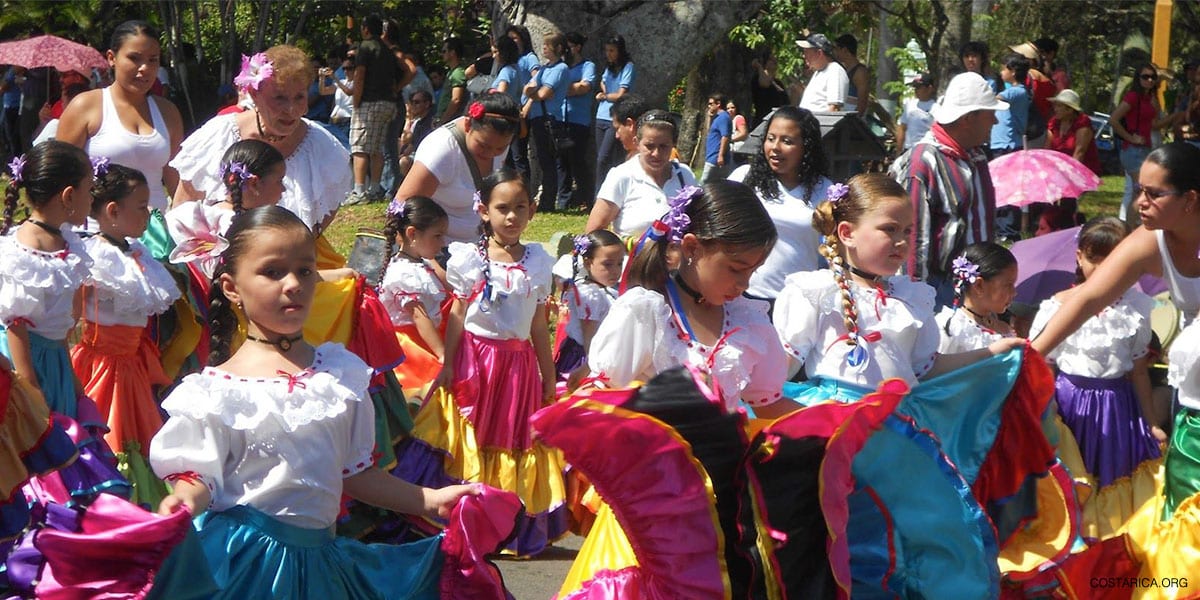
When it comes to languages spoken and ease of communication for tourists, both Costa Rica and Nicaragua offer an array of options. In Costa Rica, the official language is Spanish, and it is widely spoken throughout the country. English is also commonly understood in many tourist areas, especially in hotels, restaurants, and popular attractions.
Additionally, there are communities with a significant number of expatriates where English may be more prevalent. Nicaragua's official language is also Spanish, making it the most widely used language among locals.
However, compared to Costa Rica, English proficiency may vary across different regions in Nicaragua. In major cities such as Managua and Granada or popular tourist destinations like San Juan del Sur or Ometepe Island, you can expect to find some level of English spoken in hotels and businesses catering to international visitors.
However, in more remote areas or smaller towns off the beaten path, English proficiency may be limited. While both countries have a predominantly Spanish-speaking population, it's worth noting that Costa Rica has a reputation for being more fluent in English overall due to its long-standing tourism industry.
In recent years, efforts have been made in Nicaragua to enhance English education programs to accommodate the growing number of international visitors. In terms of ease of communication for tourists who do not speak Spanish fluently or at all, Costa Rica might generally offer a smoother experience due to its higher level of English proficiency amongst locals.
However, with some basic Spanish phrases and a willingness to overcome potential language barriers through gestures and patience when needed (which can be part of the adventure!), travelers can still navigate Nicaragua comfortably. Ultimately though both countries welcome tourists from around the world with open arms and friendly smiles; whether you choose Costa Rica or Nicaragua will largely depend on your personal preferences for other aspects such as natural beauty spots worth visiting or safety considerations which we will explore further ahead in this article
Healthcare and Medical Tourism
When it comes to healthcare and medical tourism, both Costa Rica and Nicaragua have made significant advancements in recent years.
Costa Rica has long been recognized as a hub for medical tourism in Central America, with its state-of-the-art facilities, highly trained medical professionals, and reputation for providing quality care. The country boasts several internationally accredited hospitals and clinics that cater to the needs of both domestic and international patients.
In terms of healthcare infrastructure, Costa Rica outshines Nicaragua with its well-developed system. The country has a higher number of hospitals, clinics, and specialized medical centers compared to its neighbor.
Additionally, the presence of cutting-edge technology and modern equipment in Costa Rican medical facilities further bolsters its appeal to medical tourists. Nicaragua is also beginning to emerge as a destination for medical tourism, albeit on a smaller scale compared to Costa Rica.
The country offers affordable healthcare options that attract budget-conscious travelers seeking quality care at lower costs. With advancements in infrastructure and an increasing number of private clinics in popular tourist areas such as Granada and Managua, Nicaragua is slowly establishing itself as an alternative option for medical tourists.
It is important to note that while both countries offer healthcare services to tourists, Costa Rica's system tends to be more efficient overall due to its long-standing reputation in the field. However, Nicaragua's growing presence should not be overlooked as it presents unique opportunities for those seeking affordable alternatives without compromising on quality care.
Examining the healthcare facilities and the growing trend of medical tourism in Costa Rica and Nicaragua.

Examining the healthcare facilities and the growing trend of medical tourism in Costa Rica and Nicaragua reveals interesting insights into the quality of healthcare services available to both locals and visitors. In recent years, Costa Rica has gained recognition as a leading destination for medical tourism in Latin America.
The country boasts a well-developed healthcare system, modern facilities, and highly trained medical professionals. Its hospitals are equipped with state-of-the-art technology and adhere to international standards.
Medical tourists in Costa Rica often seek affordable yet high-quality medical procedures such as cosmetic surgery, dentistry, orthopedics, and ophthalmology. The cost of healthcare services in Costa Rica is significantly lower when compared to North America or Europe, making it an attractive option for those seeking quality treatment at a fraction of the price.
Additionally, Costa Rica's geographical proximity to the United States allows for convenient travel arrangements for patients seeking specialized treatments not available in their home countries. Nicaragua, on the other hand, is also emerging as an alternative destination for medical tourism in Central America.
While its healthcare system may not be as developed or renowned as that of its neighbor Costa Rica, Nicaragua offers affordable medical services that have attracted international attention. The country provides a range of treatments including dental care, plastic surgery, fertility treatments, and rehabilitation services.
It's worth noting that while both countries offer competitive prices for medical procedures compared to more expensive destinations like the United States or Europe, prospective patients should thoroughly research their chosen clinics and doctors before making any decisions. As with any form of healthcare abroad, it is essential to consider factors such as accreditation standards and reviews from previous patients.
In terms of safety within healthcare facilities themselves, both Costa Rica and Nicaragua have made efforts to ensure patient welfare. However, it must be acknowledged that there have been some reports of incidents affecting tourists' safety in certain areas within each country.
In particular instances where tourists are targeted by criminals due to their perceived vulnerability or valuables, it is advisable to exercise caution and follow local safety recommendations. While Costa Rica has long been recognized as a leading destination for medical tourism in Central America, Nicaragua is beginning to make strides in this field.
Both countries offer affordable medical services and have seen an increase in the number of visitors seeking treatments. However, it is important for prospective medical tourists to conduct thorough research regarding healthcare facilities and take necessary precautions to ensure their safety throughout their stay.
Shopping and Local Markets
When it comes to shopping and local markets, both Costa Rica and Nicaragua offer unique experiences that cater to different preferences.
In Costa Rica, shoppers can explore a diverse range of options, from bustling city markets to upscale boutiques. The capital city of San Jose is known for its vibrant Central Market (Mercado Central), where visitors can immerse themselves in a lively atmosphere filled with vendors selling fresh produce, local crafts, and traditional food items such as casados (typical Costa Rican meal) or ceviche.
This market is an excellent place to get a taste of Costa Rican culture and mingle with locals as they go about their daily routines. However, if you're looking for more upscale shopping opportunities, you'll find plenty in the beach town of Tamarindo or the cosmopolitan city of Escazu.
These areas are home to modern malls featuring international brands, high-end boutiques offering designer clothing and accessories, as well as art galleries showcasing local artists' works. Tamarindo's weekly farmer's market is also worth a visit if you want to sample fresh organic produce or shop for unique souvenirs made by local artisans.
On the other hand, Nicaragua offers a more traditional and authentic shopping experience that reflects its rich cultural heritage. In cities like Granada or Leon, travelers can wander through charming colonial streets lined with colorful buildings housing small shops selling handmade crafts, pottery, textiles, and leather goods.
The Masaya Artisan Market is famous for its wide variety of Nicaraguan handicrafts such as hammocks, ceramics, paintings, and wooden carvings – perfect for those seeking one-of-a-kind treasures. For those interested in supporting local communities while shopping ethically sourced products directly from producers; Nicaragua's cooperatives are an excellent option.
These cooperatives empower farmers and artisans by providing fair trade practices while offering visitors the chance to purchase organic coffee beans or cocoa products directly from the source. Both Costa Rica and Nicaragua provide distinct shopping experiences that showcase their unique cultural heritage.
While Costa Rica may offer more modern and upscale shopping opportunities, Nicaragua presents a chance to immerse yourself in traditional crafts and support local communities. Whether you're seeking trendy boutiques or authentic handmade goods, both countries have something to offer the discerning shopper.
A guide to shopping experiences, from local markets to upscale boutiques in both countries.
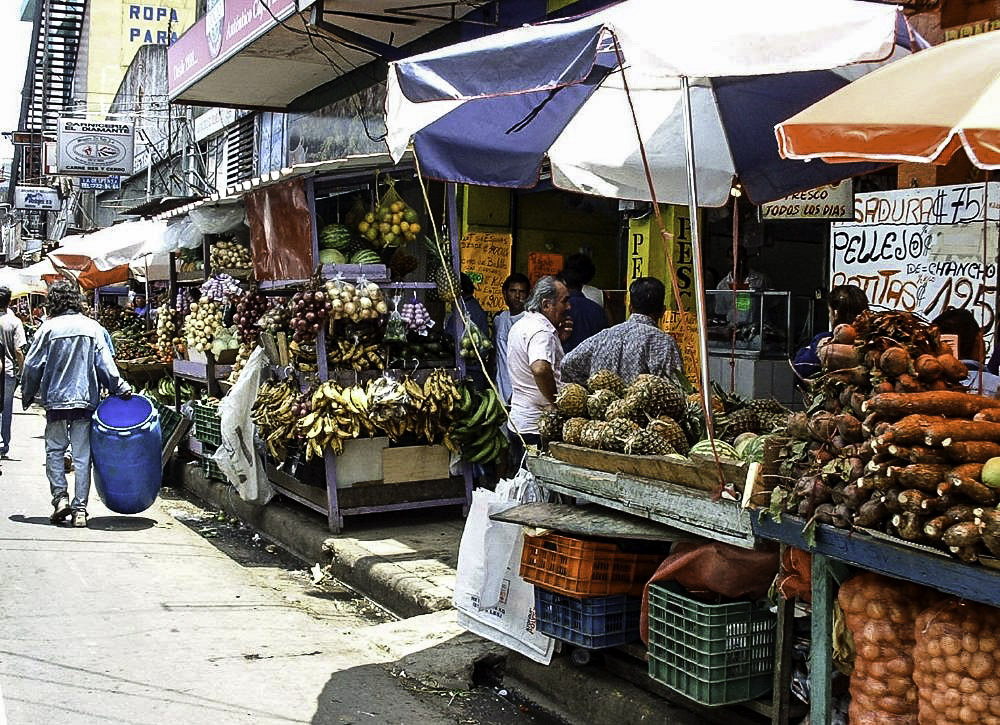
Shopping experiences in Costa Rica and Nicaragua offer a diverse range of options, from bustling local markets to upscale boutiques. Both countries are known for their unique crafts, artisanal goods, and vibrant shopping scenes. In Costa Rica, visitors can explore the vibrant capital city of San Jose, which is home to several renowned shopping districts.
The Central Market in San Jose is a must-visit for tourists looking for an authentic Costa Rican shopping experience. Here, you can find an array of souvenirs, handcrafted goods made by local artisans, traditional clothing, jewelry, and delicious local treats like coffee and chocolate.
For those seeking a more upscale retail experience in Costa Rica, the Multiplaza Escazú mall is a popular destination. Located in the western part of San Jose, this modern mall offers an extensive selection of international luxury brands, including fashion labels like Louis Vuitton and Carolina Herrera.
It also features high-end restaurants and entertainment options. In Nicaragua, travelers can explore the vibrant markets that showcase the country's rich cultural heritage.
One such market is Masaya Market located near Managua – it's considered one of Central America's largest handicraft markets with colorful stalls filled with ceramics, hammocks, leather goods as well as traditional clothing and jewelry made by local artisans. Granada's Central Market is also worth mentioning; it offers an excellent opportunity to immerse yourself in the local culture while discovering unique Nicaraguan handicrafts including pottery and textiles.
Apart from these traditional markets that celebrate indigenous crafts and traditions in both countries, there are also numerous boutiques scattered throughout Costa Rica and Nicaragua that cater to more contemporary tastes. Coastal towns such as Tamarindo in Costa Rica or San Juan del Sur in Nicaragua offer a laid-back beachfront atmosphere with surf shops featuring trendy clothing brands tailored to beachgoers' needs.
Whether you're looking for authentic handmade crafts or modern luxury brands alike during your trip to either country, you'll find a wide range of shopping experiences that cater to different tastes and budgets. From local markets bursting with cultural significance to high-end boutiques, both Costa Rica and Nicaragua have plenty to offer in terms of retail therapy.
Digital Nomad and Expat Communities
In recent years, both Costa Rica and Nicaragua have emerged as popular destinations for digital nomads and expats seeking a balance of work and leisure.
Let's delve into the vibrant communities that have developed in each country, offering a supportive network for those working remotely. Costa Rica has long been recognized as an attractive destination for expats due to its stable political climate, excellent healthcare system, and high standard of living.
The country is home to a diverse expat community that spans all age groups and professions. Whether you're a freelance writer, software developer, or entrepreneur, you'll find like-minded individuals in Costa Rica who are eager to connect and share their experiences.
The digital nomad scene in Costa Rica is particularly strong in cities such as San Jose, Tamarindo, and Puerto Viejo. These locations offer co-working spaces with modern amenities such as high-speed internet connections, comfortable workstations, and networking events tailored specifically for remote workers.
Moreover, the country's natural beauty provides the perfect backdrop for work-life balance – think stunning beaches during lunch breaks or hiking through lush rainforests on weekends. On the other hand, Nicaragua is rapidly emerging as an enticing option for digital nomads seeking an affordable yet vibrant destination.
With its lower cost of living compared to Costa Rica and many other countries similar to it, Nicaragua offers a compelling alternative. The colonial city of Granada has become a hub for expats with its charming atmosphere and picturesque landscapes.
Despite some concerns about safety in certain areas of Nicaragua (particularly in major cities), many expats feel safe within their communities by taking necessary precautions. Areas like San Juan del Sur attract adventurous digital nomads who combine their work with exploring tourist attractions Nicaragua has to offer – from surfing on beautiful Pacific beaches to hiking volcanoes surrounded by breathtaking landscapes.
Both Costa Rica and Nicaragua provide opportunities for networking within the expat community through various social events, meetups, and co-working spaces. Engaging with these communities can lead to valuable connections, shared knowledge, and collaborative opportunities.
Ultimately, the choice between Costa Rica and Nicaragua as a digital nomad or expat destination depends on personal preferences. While Costa Rica offers a higher standard of living and more developed infrastructure, Nicaragua has its own unique charm and lower cost of living.
It's important for individuals to consider factors such as safety, language proficiency (the official language of Costa Rica most likely is Spanish), access to amenities like healthcare and technology infrastructure (such as internet connectivity), as well as cultural experiences they seek. By immersing themselves within the digital nomad and expat communities in each country, individuals can gain firsthand insights from fellow travelers who have experienced both sides – Costa Rica versus Nicaragua – allowing them to make an informed decision that aligns with their work-life goals.
Assessing the amenities, communities, and lifestyle for expats and digital nomads in Costa Rica and Nicaragua.

When it comes to attracting expats and digital nomads, both Costa Rica and Nicaragua have their unique offerings. In Costa Rica, known as the "Switzerland of Central America," expat communities thrive in areas such as the Central Valley, Jaco, Tamarindo, and Escazu.
These regions boast modern amenities including high-speed internet, well-equipped coworking spaces, and a range of housing options catering to various budgets. Expats in Costa Rica enjoy a high standard of living with access to quality healthcare facilities, international schools for families with children, vibrant arts scenes, and a strong sense of community.
On the other hand, digital nomads seeking an affordable yet fulfilling lifestyle may find Nicaragua to be an ideal destination. Towns such as Granada and San Juan del Sur have become popular among expats due to their charming colonial architecture, beautiful beaches, affordable cost of living compared to countries similar to Costa Rica.
The emerging remote work culture has prompted the establishment of coworking spaces that provide reliable internet connections alongside networking opportunities. While not as developed as its neighbor in terms of infrastructure or healthcare facilities for foreigners,
Expatriates considering Nicaragua should be aware that safety concerns persist in certain areas; however many expat communities report feeling safe within their enclaves while taking necessary precautions. Additionally, both countries offer enticing options for expats and digital nomads seeking an enriching experience abroad.
Costa Rica's well-established infrastructure combined with its high standard of living make it an attractive choice for those who value convenience and modern amenities. Nicaragua appeals to individuals seeking a more laid-back lifestyle amidst breathtaking natural beauty while being mindful of certain safety considerations.
Whether one leans towards embracing the pura vida spirit in Costa Rica or immersing themselves in Nicaragua's rich cultural tapestry ultimately depends on personal preferences and priorities. It is advisable for prospective expats and digital nomads to thoroughly research their desired locations, visiting them if possible, and engaging with existing expat communities to gain insight into the amenities, communities, and lifestyle each destination has to offer.
Educational and Volunteer Opportunities
When it comes to educational and volunteer opportunities, both Costa Rica and Nicaragua offer unique experiences that allow visitors to give back while expanding their knowledge and skills. In Costa Rica, there is a strong emphasis on environmental conservation and sustainability, making it an ideal destination for those interested in ecology, biology, or environmental science. Various organizations and research centers provide opportunities for volunteers to participate in wildlife conservation projects, marine research initiatives, or reforestation efforts.
For example, the Monteverde Cloud Forest Reserve offers educational programs where participants can learn about the region's biodiversity and contribute to ongoing scientific research. Nicaragua also presents a range of educational and volunteer options.
While the country may be lesser-known compared to its neighbor Costa Rica, it boasts unique cultural heritage sites and historical landmarks that provide valuable learning experiences. Volunteers can engage with local communities through organizations focused on education, health care, or community development projects.
For instance, Casa-Nica provides opportunities for individuals interested in teaching English or assisting with community initiatives such as clean water access programs. Both countries also offer language immersion programs where visitors can learn Spanish while contributing to community-based projects.
This allows volunteers to not only enhance their language skills but also gain a deeper understanding of local culture and build relationships with residents. It is important to note that safety considerations should be taken into account when choosing educational and volunteer opportunities in either country.
While Costa Rica has long been considered one of the safest countries in Central America for tourists due to its stable political climate and well-developed tourism infrastructure; Nicaragua has experienced periods of political unrest in recent years which may impact safety conditions for travelers. Therefore, it is advisable to stay informed about travel advisories from reliable sources before making any decisions.
Both Costa Rica and Nicaragua provide excellent educational and volunteer opportunities where visitors can contribute meaningfully while broadening their horizons. However, it is essential for potential volunteers to carefully assess safety considerations when planning their experience.
Exploring opportunities for learning and volunteering in various sectors.
Exploring opportunities for learning and volunteering in various sectors:
1. Education and Teaching Programs:
Both Costa Rica and Nicaragua offer a range of educational programs for volunteers interested in teaching English or other subjects.
In Costa Rica, you can find organizations working in rural communities, providing support to schools that lack resources. These programs often involve assisting local teachers, organizing extracurricular activities, and helping students improve their language skills.
In Nicaragua, similar opportunities exist, particularly in rural areas where access to quality education is limited. Volunteers can engage in teaching English or other subjects while promoting educational equity.
Both countries provide an immersive experience where volunteers can make a positive impact on the lives of local children while gaining valuable teaching experience.
2. Environmental Conservation Projects:
For those passionate about environmental sustainability, both Costa Rica and Nicaragua offer exceptional opportunities to contribute to conservation efforts. Costa Rica is renowned as a global leader in eco-tourism and sustainable practices; therefore, there are numerous organizations focused on protecting national parks, preserving biodiversity, and promoting responsible tourism practices.
From assisting with sea turtle conservation along the coasts to participating in reforestation projects within protected reserves like Monteverde Cloud Forest Reserve or Tortuguero National Park—volunteers can actively contribute to preserving these fragile ecosystems. Similarly, Nicaragua boasts diverse ecosystems ranging from rainforests to volcanic landscapes.
There are various initiatives dedicated to wildlife conservation such as protecting endangered species like jaguars or conserving natural habitats through sustainable agriculture practices. Volunteering with these projects provides an opportunity not only to learn about the rich biodiversity found within these countries but also to actively participate in safeguarding it for future generations.
3. Community Development Initiatives:
Both Costa Rica and Nicaragua have community development programs that focus on improving living conditions within disadvantaged communities by addressing social issues such as poverty alleviation, healthcare access improvement, infrastructure development, and women empowerment initiatives among others.
In Costa Rica's rural areas like Guanacaste or Limón, there are initiatives that aim to develop sustainable agriculture practices, provide vocational training for unemployed individuals, or support local artisans in preserving traditional handicrafts. Similarly, in Nicaragua, organizations work on community-led projects that focus on economic empowerment through microfinance programs or promoting cultural tourism by engaging visitors with local communities.
Volunteering in these sectors allows individuals to gain a deeper understanding of the challenges faced by these countries and contribute to creating positive social change. Whether you choose Costa Rica or Nicaragua, both nations offer numerous opportunities for learning and making a difference in various sectors of community development.
Real Estate and Investment Prospects
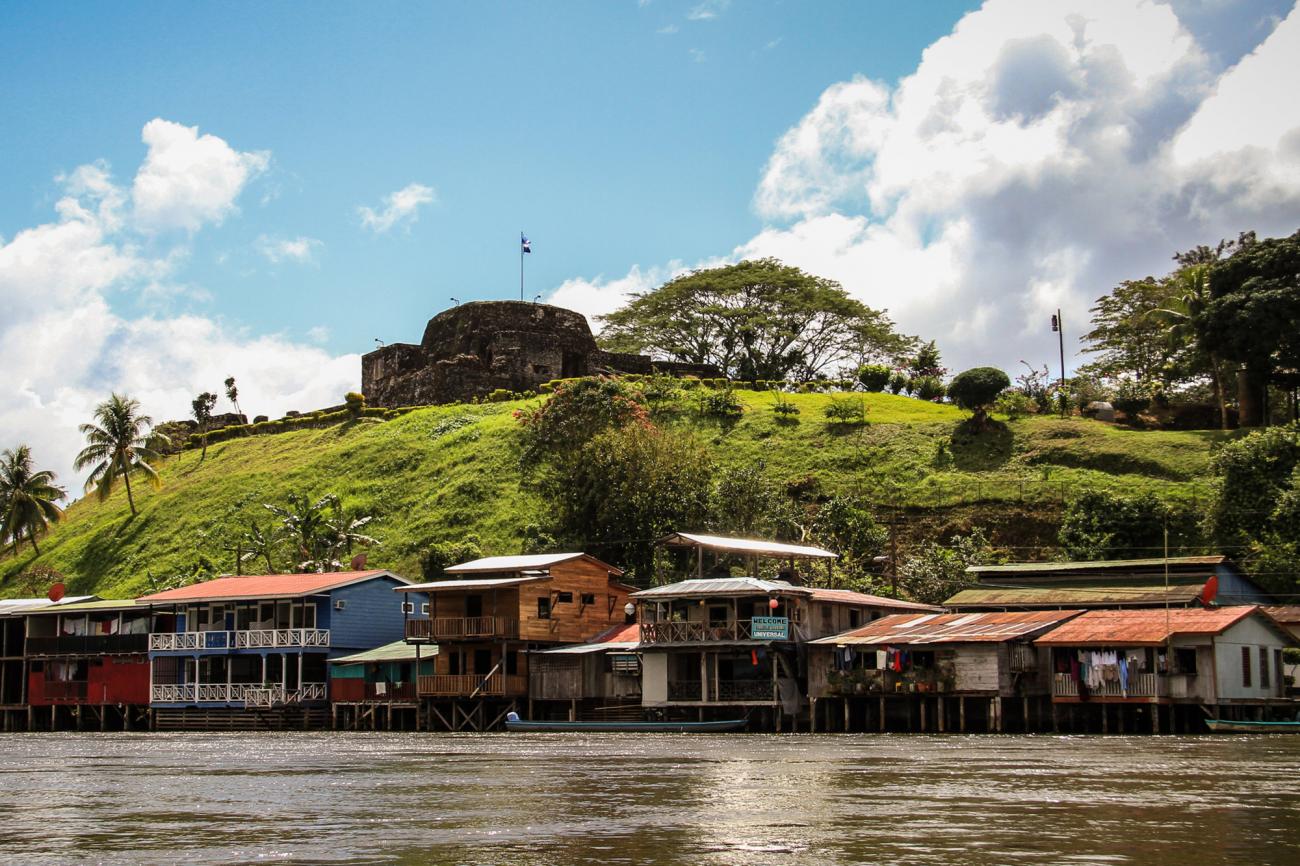
Investing in real estate can be an excellent opportunity for individuals looking to diversify their portfolio or establish a new home in a foreign country. Both Costa Rica and Nicaragua offer unique advantages and considerations for real estate investors.
Starting with Costa Rica, the country has long been known for its stable economy, political climate, and attractive investment opportunities. The real estate market in Costa Rica has experienced steady growth over the years, particularly due to the country's popularity as a tourist destination.
From beachfront properties to luxury condos in bustling cities like San Jose, Costa Rica provides a diverse range of options for potential investors. Additionally, the government has implemented measures to protect foreign investments and offers incentives such as tax breaks for certain real estate projects.
However, it is important to note that prices in popular areas like Guanacaste or Manuel Antonio can be higher compared to other regions of the country. On the other hand, Nicaragua presents a relatively untapped market with great potential for investment.
The country's affordable real estate prices make it an attractive option for buyers seeking more budget-friendly opportunities compared to its counterpart Costa Rica. From colonial-style homes in Granada's historic center to beachfront properties along the Pacific coastlines, Nicaragua offers a variety of options for investors looking to acquire property at competitive prices.
Additionally, the government has introduced various incentives and initiatives aimed at attracting foreign investment into sectors such as tourism and agriculture. It is crucial when considering real estate investment in either country that thorough research is conducted regarding local laws, regulations, property titles, and working with reputable agents or lawyers knowledgeable about local practices.
Consulting with professionals who have experience navigating each country's real estate market can provide invaluable guidance throughout the process. Both Costa Rica and Nicaragua present promising prospects for those interested in investing in real estate abroad.
While Costa Rica may offer a more established market with higher property values overall compared to Nicaragua's emerging market, the latter presents an appealing opportunity for more budget-conscious investors seeking a potentially higher return on investment. Ultimately, personal preferences, long-term goals, and risk tolerance will play a significant role in determining which country offers the best real estate prospects for individual investors.
Analyzing the real estate market and investment opportunities for foreigners.
Costa Rica and Nicaragua, both situated in Central America, offer unique real estate markets with investment opportunities for foreign buyers.
Costa Rica has long been recognized as a preferred destination for those seeking to invest in property abroad. Its stable democracy, favorable business climate, and well-established legal framework make it an attractive option.
Additionally, the country's commitment to preserving its rich biodiversity has resulted in regulations that promote sustainable development and eco-friendly practices. In Costa Rica, foreigners enjoy the same property rights as citizens, which means they can own land outright or through a local corporation without any restrictions.
This openness has led to a thriving real estate sector catering to international buyers. Popular areas such as Guanacaste and Manuel Antonio offer a range of options from luxury beachfront villas to affordable condos nestled amidst lush rainforests.
The official language of Costa Rica is Spanish, but English is widely spoken in tourist areas and by real estate professionals. On the other hand, Nicaragua is gradually emerging as an intriguing option for real estate investors seeking affordable properties with great potential for growth.
With its stunning landscapes of volcanoes, lakes, and pristine beaches along the Pacific Ocean and Caribbean Sea coastlines, Nicaragua offers plenty of charm and natural beauty that rivals its more popular neighbor. While still developing its tourism infrastructure, the country provides an opportunity for early investors looking for high returns.
Foreigners can own property outright in Nicaragua through direct ownership or via local corporations without any requirements of permanent residency or citizenship. The cost of acquiring land or properties can be significantly lower compared to other Central American countries like Costa Rica.
However, it is important to conduct thorough due diligence when considering investments in Nicaragua's real estate market since regulations may vary from region to region. Both Costa Rica and Nicaragua present compelling investment opportunities in their respective real estate markets.
Costa Rica's established reputation appeals to those seeking stability and a well-regulated market, while Nicaragua offers more affordable options with high growth potential. It is advisable for prospective investors to carefully evaluate their priorities, conduct thorough research, and enlist the services of local real estate professionals who can provide valuable guidance based on their specific needs and goals.
Retirement Living: Costa Rica vs Nicaragua
When it comes to retirement living, both Costa Rica and Nicaragua offer numerous advantages for retirees seeking a fulfilling lifestyle in Central America.
Each country has its unique charm and appeals to different aspects of retirement. In terms of safety, while both countries have their own considerations, Costa Rica has historically been regarded as safer than Nicaragua.
However, it is important to note that these crime rates can vary depending on specific regions and cities within each country. Costa Rica has long been a popular choice for retirees due to its stable democracy, well-developed infrastructure, and renowned healthcare system.
The official language of Costa Rica is Spanish, although English is widely spoken in tourist areas. The country boasts a high quality of life with excellent healthcare facilities available at affordable prices for retirees.
Additionally, Costa Rica offers a variety of amenities tailored to the needs and preferences of expatriates and retirees, including gated communities, social clubs, golf courses, and more. On the other hand, Nicaragua has emerged as an attractive alternative for retirement living due to its lower cost of living compared to Costa Rica.
The country offers affordable real estate options with beautiful landscapes such as beachfront properties or colonial-style homes in picturesque towns like Granada or Leon. While the official language is Spanish in Nicaragua as well, English is commonly spoken in tourist areas.
Both countries offer a range of activities and attractions that cater to retirees' interests. In Costa Rica, popular tourist attractions include stunning national parks like Manuel Antonio or Arenal Volcano National Park where one can enjoy wildlife encounters and outdoor adventures like hiking or zip-lining through lush rainforests.
Similarly, Nicaragua presents unique opportunities such as exploring colonial towns like Granada or visiting breathtaking natural wonders like Ometepe Island formed by two volcanoes rising from Lake Nicaragua. Choosing between Costa Rica and Nicaragua for retirement living ultimately depends on individual priorities and preferences.
While Costa Rica offers a higher level of safety, well-established infrastructure, and comprehensive healthcare system, Nicaragua's lower cost of living and emerging expat communities can be appealing to retirees seeking an affordable yet fulfilling lifestyle. It is advisable for prospective retirees to thoroughly research and consider factors such as safety, healthcare facilities, cost of living, and the availability of amenities before making a decision.
Comparing the living conditions, costs, and facilities for retirees.
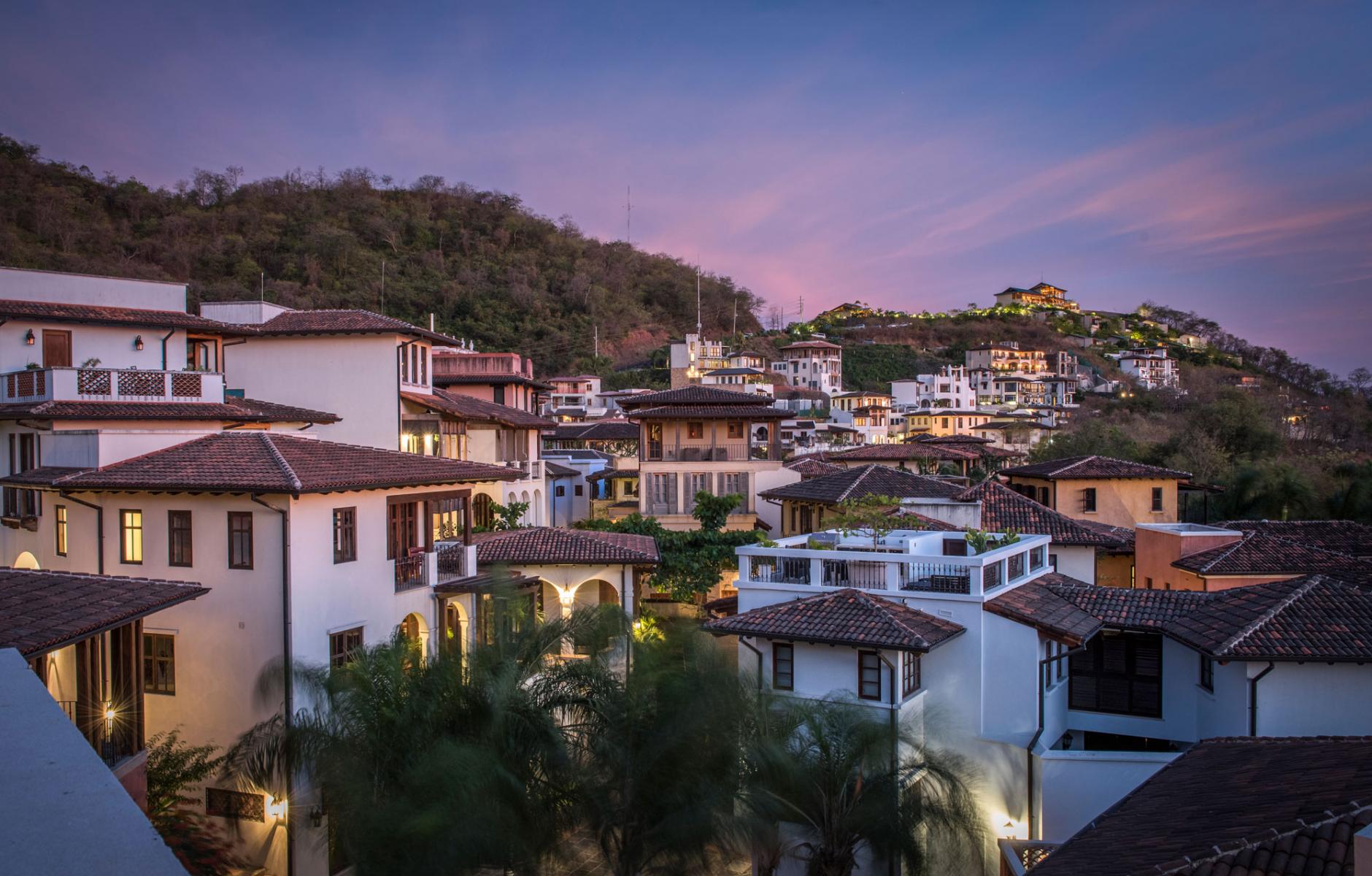
Retirement is a significant milestone in life that often brings with it the desire for a peaceful, comfortable, and affordable place to settle down. For those considering retiring abroad, Costa Rica and Nicaragua emerge as popular options due to their natural beauty, welcoming communities, and lower cost of living compared to many developed countries.
However, when it comes to comparing the living conditions, costs, and facilities for retirees between these two Central American nations, there are notable differences worth exploring. Costa Rica has long been renowned as a favored retirement destination due to its stable democracy and impressive healthcare system.
The country boasts a well-established network of hospitals and medical clinics that offer high-quality care at relatively affordable prices. Retirees can access universal healthcare through the Costa Rican Social Security System (CCSS), known as Caja Costarricense de Seguro Social (CCSS).
This comprehensive coverage includes doctor's visits, hospital stays, medications, lab tests, and even surgeries. Additionally, private health insurance options are available for those seeking extra peace of mind.
On the other hand, while Nicaragua may not offer healthcare services on par with Costa Rica's level of development yet (as of 2024), it does provide affordable medical care options that cater to retirees on a budget. In recent years, Nicaragua has made significant progress in expanding its healthcare system to better serve both locals and foreigners alike.
Major cities like Managua and Granada have modern hospitals equipped with capable physicians who can handle routine check-ups or emergencies. In terms of overall cost of living for retirees in Costa Rica versus Nicaragua in 2024 (considering expenses such as housing, transportation food), both countries remain relatively more affordable compared to many Western nations.
Costa Rica typically offers higher-priced real estate options especially in popular areas like Guanacaste or the Central Valley region where many expats choose to reside; however, there are also more reasonably priced properties available further from tourist hotspots. On the other hand, Nicaragua is generally considered even more affordable, with a lower average cost of housing, transportation, and daily necessities.
Retirees seeking a more laid-back lifestyle or those on a tighter budget may find Nicaragua's cost of living particularly appealing. Retirees considering Costa Rica or Nicaragua as their retirement destination will find appealing options in both countries.
Costa Rica offers a higher level of healthcare services and boasts a stable democracy that provides peace of mind to its residents. However, Nicaragua's lower cost of living can make retirement more financially comfortable for individuals looking to stretch their retirement savings.
Ultimately, personal preferences in terms of healthcare access, budget considerations, and desired lifestyle will guide retirees in making the best choice between these two captivating Central American nations. [Word Count: 519]
Local Laws and Regulations for Tourists
When traveling to a new country, it is essential to familiarize yourself with the local laws and regulations to ensure a safe and enjoyable trip. In the case of Costa Rica and Nicaragua, both countries have their own sets of rules that tourists should be aware of.
While Costa Rica has long been recognized as a popular tourist destination, Nicaragua is steadily gaining attention as an emerging travel hotspot. Understanding the local laws in these countries will help you navigate your way through your vacation smoothly.
In Costa Rica, tourists are expected to have a valid passport with at least six months remaining before expiration. Upon arrival, visitors are granted a 90-day tourist visa.
It is important to note that overstaying this period can result in fines or deportation. Additionally, while there are no specific visa requirements for citizens of certain countries, it is always wise to check with your embassy or consulate before traveling.
Nicaragua also requires tourists to possess valid passports for entry, and most nationalities can obtain a 90-day tourist visa upon arrival. However, it is crucial to note that certain nationalities may need visas in advance; therefore, checking official sources such as embassies or consulates is recommended before traveling.
In terms of safety, both Costa Rica and Nicaragua have their own unique challenges. While Costa Rica has long been considered one of the safest countries in Central America for tourists due to its stable political environment and robust tourism industry, it's always advisable to exercise caution when visiting unfamiliar areas or during nighttime hours.
On the other hand, Nicaragua has seen an increase in tourism over recent years but still faces some challenges regarding safety perception due to its history of political unrest. While security conditions have improved significantly since then, visitors should stay informed about the current situation and exercise caution when exploring off-the-beaten-path destinations.
Overall, both Costa Rica and Nicaragua offer incredible experiences for travelers while adhering to their respective laws and regulations. By staying informed and following common sense safety practices, you can enjoy a memorable vacation in either country.
Understanding the legal aspects that tourists should be aware of in both countries.
Understanding the legal aspects that tourists should be aware of in both Costa Rica and Nicaragua is crucial for a smooth and hassle-free travel experience. While these two countries share some similarities in their legal frameworks, there are also notable differences that travelers should take into consideration. In Costa Rica, the official language is Spanish, so it is advisable to have a basic understanding of the language or carry a translation tool.
The country has a democratic government and is generally considered safe for tourists. However, like any other destination, visitors should exercise caution and be aware of their surroundings, especially in crowded areas or tourist hotspots where petty theft can occur.
Costa Rica has a well-established legal system that ensures the safety and protection of tourists. The country's crime rate against tourists is relatively low compared to some other popular destinations in the region.
However, it's always advisable to take necessary precautions, such as keeping valuable belongings secure and avoiding isolated areas during nighttime. On the other hand, Nicaragua also primarily speaks Spanish as its official language.
The country has been gaining attention as an emerging tourist destination due to its natural beauty and cultural heritage. While Nicaragua offers incredible attractions and experiences for travelers, it's essential to consider safety concerns as well.
In recent years, Nicaragua has faced socio-political unrest which has affected its tourism industry. Travelers should stay updated on the current situation before planning a visit.
Nicaragua's crime rate can vary depending on the location within the country. While overall safety has been improving gradually, certain areas may still pose risks to tourists due to petty theft or occasional instances of violent crime.
It is recommended to research specific regions thoroughly and consult with local authorities or reliable travel advisories before traveling there. Both Costa Rica and Nicaragua have their unique legal considerations for tourists.
While Costa Rica boasts a strong legal system with relatively low crime rates against tourists, Nicaragua requires more careful planning due to recent political challenges affecting security levels. It's crucial for travelers to stay informed, follow local laws and regulations, and exercise common sense to ensure a safe and enjoyable journey in either country.
Connectivity and Technology Infrastructure
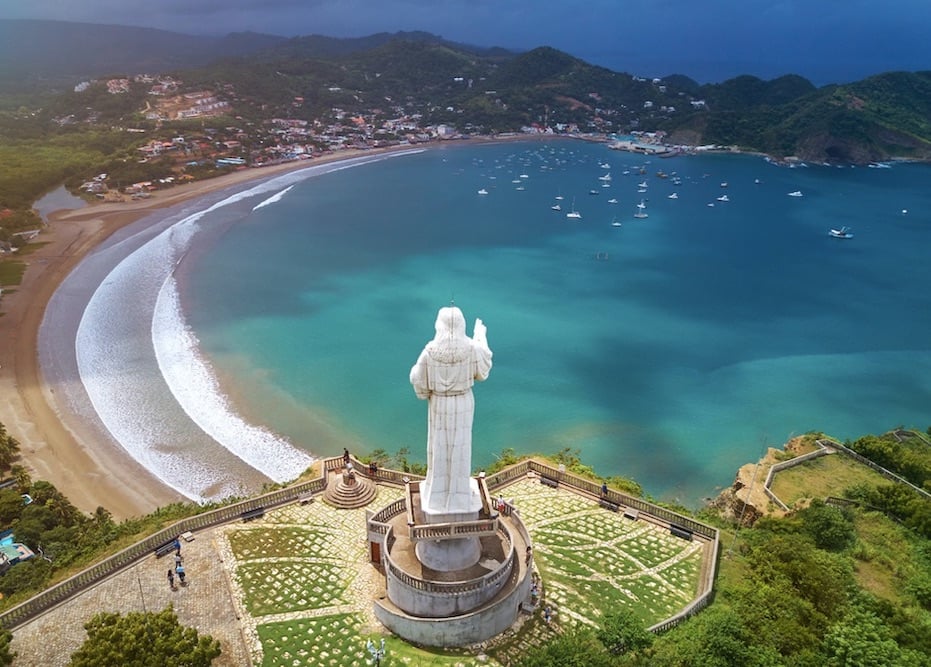
In the digital age, connectivity and technology infrastructure play a significant role in enhancing the travel experience for tourists.
Both Costa Rica and Nicaragua have made considerable advancements in this area, although there are notable differences to consider when comparing the two countries. Costa Rica stands out as having a highly developed communication infrastructure, especially in urban areas.
The country offers reliable internet connectivity, with high-speed options available in most hotels, resorts, and major city centers. Wi-Fi hotspots are prevalent throughout popular tourist destinations such as San Jose, Jaco Beach, and Manuel Antonio National Park.
Additionally, Costa Rica boasts a well-established mobile network that covers most of the country's territory. Visitors can easily purchase prepaid SIM cards or use international roaming services to stay connected.
On the other hand, Nicaragua's technology infrastructure is still developing but has witnessed significant improvements over recent years. While urban areas like Managua provide reasonable internet access with decent speeds, rural regions may experience slower connectivity or limited coverage.
It is worth noting that some remote tourist attractions in Nicaragua might have limited or no access to internet services at all. Travelers should plan accordingly and be prepared for intermittent connectivity during their visit.
When it comes to mobile networks in Nicaragua, major providers offer reliable coverage primarily in urban areas but may face challenges extending their reach into more remote locations. Tourists planning on exploring off-the-beaten-path destinations should be mindful of potential limitations regarding communication options.
While both Costa Rica and Nicaragua offer varying degrees of connectivity and technology infrastructure for travelers' convenience, Costa Rica generally provides a more established framework with wider coverage and faster speeds compared to its neighboring country. However, it is essential to note that technological advancements are continuously being made throughout Central America; therefore, future developments may bring significant improvements to both nations' communication networks.
Reviewing the availability and quality of internet, mobile networks, and technology services.
When it comes to connectivity and technology infrastructure, both Costa Rica and Nicaragua have made significant progress in recent years. However, there are some notable differences in terms of availability and quality of internet, mobile networks, and technology services between the two countries.
In Costa Rica, there has been a substantial investment in improving internet connectivity across the country. The official language of Costa Rica is Spanish, but English is widely spoken in tourist areas.
Most hotels, resorts, cafes, and restaurants offer free Wi-Fi for guests. In larger cities such as San Jose and popular tourist destinations like Jaco or Manuel Antonio, the internet connection is generally reliable with good speeds.
However, in more remote areas or less developed regions outside major cities, the quality of internet service may vary. Nicaragua has also seen improvements in its technology infrastructure over the years.
While not as advanced as Costa Rica's infrastructure yet, major cities like Managua offer decent internet speeds and coverage. In popular tourist areas such as Granada or San Juan del Sur, you can find hotels and cafes providing reliable Wi-Fi connections for visitors.
However, it's worth noting that outside these areas or in more rural parts of Nicaragua, access to stable internet services might be limited. When it comes to mobile networks in both countries, Costa Rica has a well-established network with major providers offering good coverage throughout most parts of the country.
Tourists can easily purchase prepaid SIM cards from various providers at airports or convenience stores to stay connected during their visit. Similarly, Nicaragua has several reliable mobile network operators covering major cities and tourist areas.
While both countries have made strides in improving their technology infrastructure over time; Costa Rica generally offers better connectivity options compared to Nicaragua. However; if you are planning to visit more remote areas or venture off the beaten path during your trip to either country; it's advisable to check beforehand for specific locations' connectivity status before relying on consistent access to high-speed internet or mobile networks.
Weather Patterns and Best Times to Visit
When planning a trip to either Costa Rica or Nicaragua, considering the weather patterns and choosing the best time to visit is crucial.
Both countries offer diverse climates and landscapes, allowing travelers to enjoy their desired weather conditions based on personal preferences and activities they plan to undertake. In terms of general climate, Costa Rica is known for its year-round tropical climate with two distinct seasons - dry season (December to April) and wet season (May to November).
The dry season brings sunny days, lower humidity levels, and a lower chance of rainfall, making it an ideal time for outdoor activities such as hiking, wildlife spotting, or exploring the stunning beaches along the Pacific coast. On the other hand, the wet season offers lush green landscapes due to frequent showers but can present some logistical challenges due to increased rainfall.
Similarly, Nicaragua experiences a tropical climate with two seasons - dry season (November to April) and rainy season (May to October). However, compared to Costa Rica's more evenly distributed rainfall throughout the year, Nicaragua's rainy season tends to be more intense.
Despite this distinction, certain regions in Nicaragua experience lower annual precipitation than others. For instance, areas around Granada or León can have less rain compared to regions along the Caribbean coast or higher elevated areas such as Matagalpa.
To decide on the best time for your visit based on weather patterns alone would require considering your preferred activities as well. If you are looking forward to exploring rainforests without much interruption from rain showers or participating in adventure sports like surfing or zip-lining without dampening effects on your experience, then choosing Costa Rica during its dry season would be optimal.
However, if you are more inclined towards cultural immersion and don't mind occasional showers while visiting colonial cities like Granada in Nicaragua during its wetter months when tourist crowds are usually thinner might be an attractive option. :
Considering both Costa Rica's dry and wet seasons and Nicaragua's dry and rainy seasons, there are various factors to weigh when deciding the best time to visit. While Costa Rica's dry season offers more predictable weather conditions suitable for outdoor activities, the intense rainy season in Nicaragua might deter some travelers.
However, those seeking a more authentic experience with fewer crowds might find the rainy season in Nicaragua appealing. Ultimately, the choice depends on personal preferences, desired activities, and tolerance for weather variations during travel.
Detailed comparison of the climate and the ideal seasons for travel in both countries.
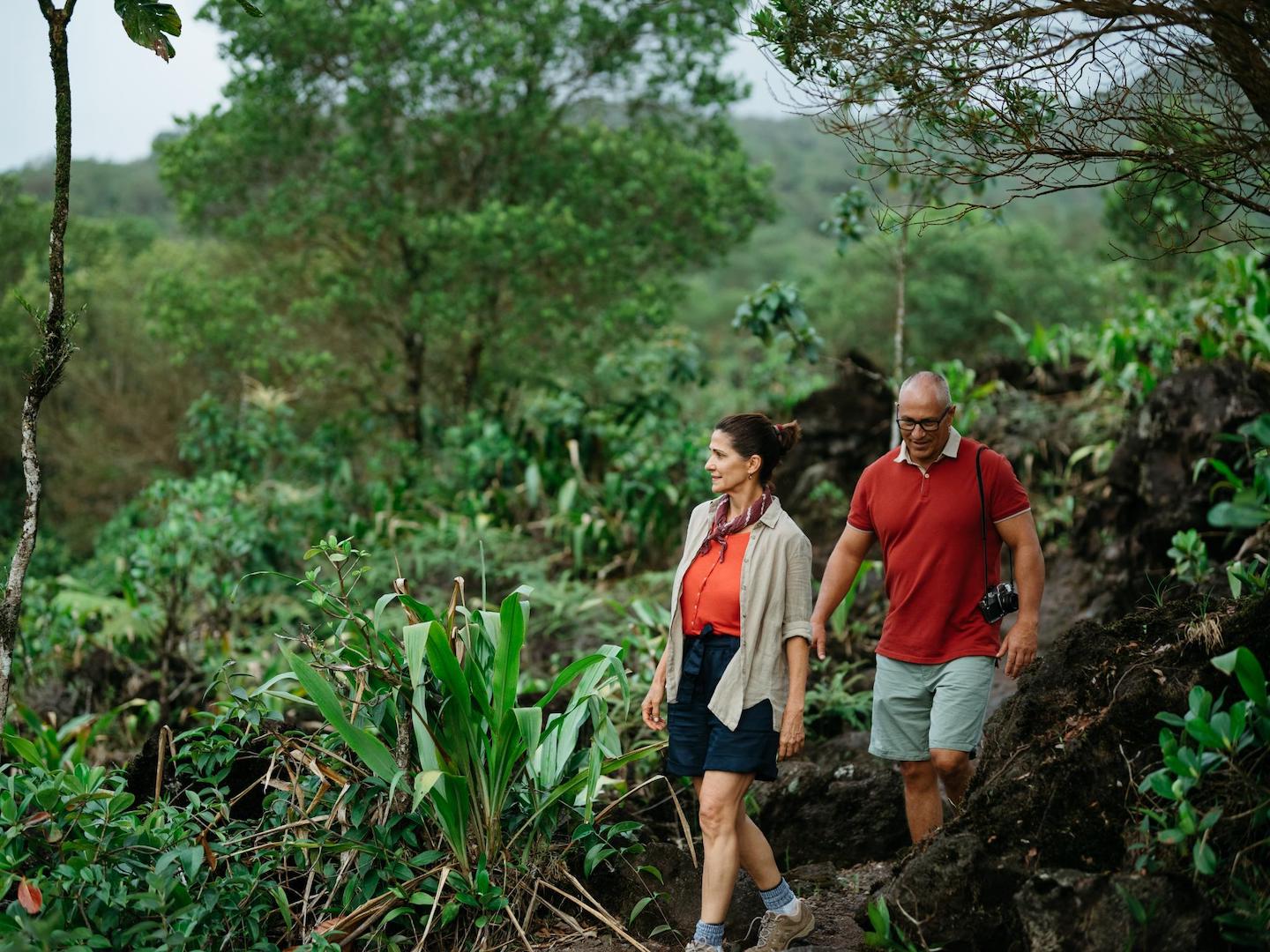
When it comes to planning a trip to Costa Rica or Nicaragua, understanding the climate and knowing the ideal seasons for travel is crucial. Both countries have diverse landscapes and distinct microclimates that offer different experiences depending on the time of year. In this section, we will delve into a detailed comparison of the climate and highlight the best times to visit each country.
Costa Rica, known for its biodiversity and stunning natural beauty, experiences a tropical climate with two distinct seasons - dry season (December to April) and rainy season (May to November). The dry season is characterized by clear skies, warm temperatures, and lower humidity levels.
It is considered the peak tourist season as visitors flock to enjoy the pristine beaches, explore national parks like Manuel Antonio or Arenal Volcano, and engage in outdoor activities such as hiking or surfing. However, it's worth noting that during this period popular destinations can get crowded and prices may be higher.
On the other hand, Nicaragua boasts a similar tropical climate but with some variations across its regions. The country experiences two main seasons - dry season (November to April) and wet season (May to October).
The dry season offers pleasant weather with sunny days and warm temperatures. This period attracts travelers seeking outdoor adventures like volcano trekking in Masaya or visiting colonial cities such as Granada.
The wet season brings occasional showers but also lush green landscapes and fewer tourists. It's an excellent time for nature enthusiasts who appreciate vibrant rainforests or want to witness sea turtle nesting on Nicaragua's Pacific coast.
Both Costa Rica and Nicaragua offer unique climates that cater to different preferences throughout the year. Costa Rica's dry season provides optimal conditions for beach relaxation and wildlife spotting while attracting larger crowds of tourists.
On the other hand, Nicaragua's varied topography presents opportunities for exploration during its dry months while offering a quieter experience overall. Whether you prefer sun-drenched days on Costa Rica's sandy shores or a more off-the-beaten-path adventure in Nicaragua, considering the climate and ideal seasons will help you make the most of your trip.
Travel Insurance and Safety Tips
When planning your trip to Costa Rica or Nicaragua, it is essential to consider travel insurance and safety tips to ensure a smooth and secure journey. Both countries offer unique experiences and attractions, but understanding the potential risks and taking necessary precautions is crucial for a worry-free vacation. Travel insurance is highly recommended when visiting Costa Rica or Nicaragua.
It provides coverage for medical emergencies, trip cancellations, lost belongings, and other unforeseen circumstances that may occur during your stay. Research different insurance providers to find a policy that suits your needs and covers any specific activities you plan to engage in, such as adventure sports or hiking in national parks.
In terms of safety, both Costa Rica and Nicaragua have their own set of considerations. While crime rates against tourists are relatively low in both countries compared to their regional counterparts, it's important to exercise caution in certain areas.
In Nicaragua, some urban areas may have higher crime rates than others due to socio-economic factors. However, popular tourist destinations such as Granada and San Juan del Sur generally have a lower crime rate against tourists.
In Costa Rica, petty theft can occur in crowded tourist areas or on public transportation; therefore, it's advisable to keep valuables secure and be aware of your surroundings. To ensure a safe journey between the two countries if you decide to drive from Costa Rica to Nicaragua (or vice versa), it's essential to research the current travel conditions and border regulations.
Familiarize yourself with the necessary documentation required for crossing borders legally without any disruptions. Additionally, driving long distances at night is not recommended due to limited visibility on rural roads.
Ultimately, while there are considerations for safety when traveling in both countries, by taking appropriate precautions such as acquiring travel insurance coverage and being aware of local conditions before venturing into unfamiliar areas - you can mitigate potential risks effectively. Remember that millions of tourists visit Costa Rica or Nicaragua each year without major incidents; however, staying informed and employing common sense will aid in ensuring a secure and enjoyable vacation.
Advice on travel insurance options and general safety tips for travelers.
When planning a trip to either Costa Rica or Nicaragua, it is crucial to consider travel insurance options and prioritize safety. These factors play a significant role in ensuring a smooth and worry-free experience for travelers. Whether you choose Costa Rica or Nicaragua, taking the necessary precautions will help you make the most of your journey.
Travel insurance is essential for any international trip, providing coverage for medical emergencies, trip cancellations or interruptions, lost luggage, and other unforeseen circumstances. Before selecting an insurance policy, carefully review the coverage provided and determine if it meets your specific needs.
Consider factors such as the duration of your stay, activities planned (such as adventure sports), and any pre-existing medical conditions that may require additional coverage. It is recommended to compare different policies and consult with travel agents or insurance providers who specialize in international travel to find the most suitable option.
Safety should always be a top priority when traveling abroad. Both Costa Rica and Nicaragua have made significant strides in improving their safety standards for tourists.
However, it is important to adhere to general safety guidelines regardless of the destination chosen. Avoid displaying expensive items in public, be cautious when using ATMs (preferably inside banks), keep important documents secure (such as passports), and maintain situational awareness in crowded areas.
In terms of crime rates against tourists, both countries have their own unique situations. While Costa Rica has long been considered one of the safest countries in Central America for tourists, Nicaragua has had its share of political unrest which influenced safety perceptions.
However, it is worth noting that much progress has been made in recent years towards stabilizing security measures within both nations. Researching current travel advisories from trusted sources such as government websites or consulting with travel experts can provide up-to-date information on safety concerns specific to each country.
By obtaining comprehensive travel insurance and adhering to general safety tips like those outlined above, travelers can ensure peace of mind during their visit to either Costa Rica or Nicaragua. While no destination can guarantee absolute safety, taking precautions and staying informed will help mitigate potential risks and allow you to fully enjoy the wonders each country has to offer.
Testimonials and Experiences from Travelers
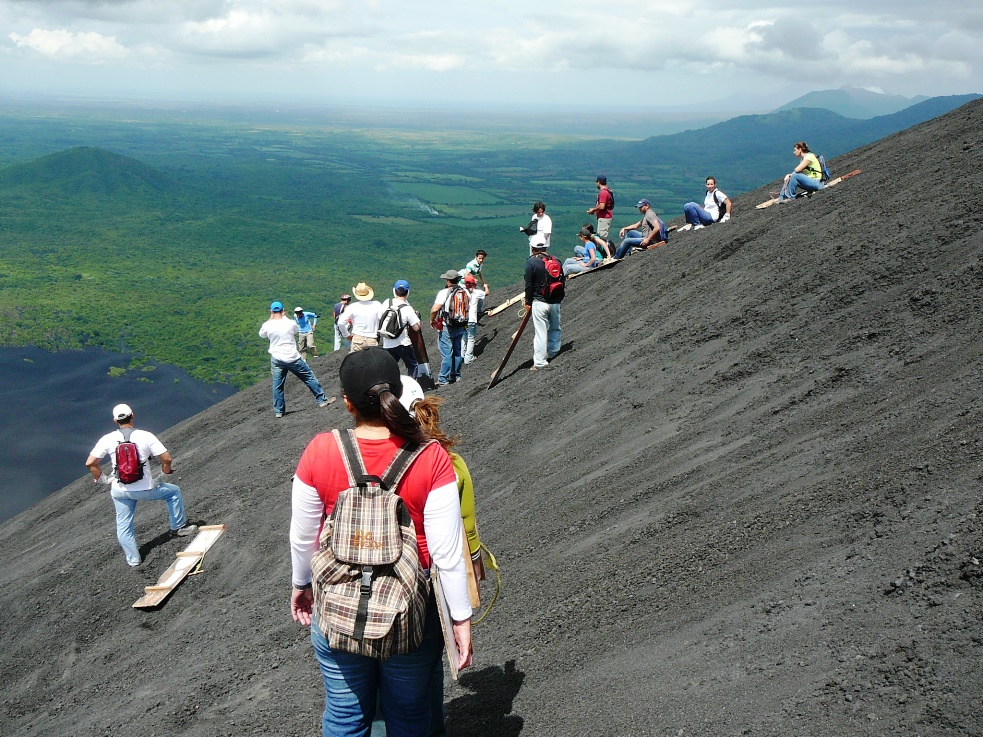
One of the most valuable insights when considering a destination is hearing from those who have already experienced it firsthand. Testimonials and experiences from travelers provide invaluable perspectives that can help inform our decision-making process.
When it comes to comparing Costa Rica and Nicaragua, numerous travelers have shared their thoughts and stories, offering a glimpse into the unique wonders of each country. For those seeking natural beauty and eco-adventures, Costa Rica often stands out as a prime choice.
Sarah, a nature enthusiast from California, describes her Costa Rica vacation as "a paradise for eco-tourism lovers." She recounts her thrilling experiences zip-lining through lush rainforests, exploring volcanic landscapes, and encountering diverse wildlife such as sloths and monkeys. Similarly, Carlos, an avid surfer from Australia, praises Costa Rica's stunning coastline and world-class waves.
He shares how he spent his days catching perfect breaks at popular surf spots like Tamarindo Beach. In contrast, travelers who crave authenticity and off-the-beaten-path adventures often find Nicaragua to be an irresistible destination.
Mark, an adventurous soul hailing from Canada, shares his journey driving from Costa Rica to Nicaragua: "As I crossed the border into Nicaragua, I was immediately captivated by its untamed beauty." He describes traversing rugged terrains with towering volcanoes in the distance and discovering hidden gems like Ometepe Island's tranquility. Sofia, a solo traveler exploring Central America for three months, emphasizes the warmth of Nicaraguan locals: "The people were incredibly friendly; they welcomed me with open arms wherever I went."
It is important to note that safety is a significant consideration for many travelers. While both countries have their unique challenges in this regard – including petty theft or scams targeting tourists – it is essential to review updated safety guidelines before embarking on any journey.
Lisa recounts her experience visiting both countries in 2017: "I felt safe throughout my trip to both Costa Rica and Nicaragua. However, I took common-sense precautions, such as avoiding isolated areas at night and keeping an eye on my belongings." It is worthwhile to consult the latest travel advisories and tap into reliable resources for up-to-date information on safety measures. These testimonials highlight the diverse appeal of Costa Rica and Nicaragua.
While Costa Rica offers a well-established infrastructure for eco-tourism enthusiasts and surfers, Nicaragua entices with its unspoiled landscapes and warm hospitality. Ultimately, personal preferences, interests, and priorities will shape the choice between these two enticing destinations.
Sharing real-life stories and experiences from people who have visited both countries.
Sharing Real-Life Stories and Experiences As you consider whether to choose Costa Rica or Nicaragua for your upcoming trip, hearing real-life stories and experiences from fellow travelers can provide valuable insights.
These firsthand accounts offer a glimpse into the unique aspects of each country, helping you make an informed decision. One traveler, Maria Rodriguez, embarked on a journey through both Costa Rica and Nicaragua and found herself captivated by the stunning natural beauty of both destinations.
She recalls her time in Costa Rica, exploring the lush rainforests teeming with diverse wildlife. Maria vividly describes her encounters with howler monkeys swinging gracefully from tree to tree while colorful toucans soared overhead.
In Nicaragua, she was enthralled by the untouched beauty of Ometepe Island—a paradise formed by two volcanoes rising out of Lake Nicaragua. The warm hospitality of the locals left an indelible mark on her heart as she engaged in conversations about their rich history and cultural traditions.
Another traveler, David Johnson, shares his experience indulging in culinary delights during his visits to both countries. In Costa Rica, he savored mouthwatering dishes such as casado—a traditional meal consisting of rice, beans, salad, plantains, and a choice of protein like chicken or fish.
The vibrant street food culture delighted David as he sampled delectable treats such as empanadas filled with succulent meats and cheeses. Similarly, in Nicaragua he found himself immersed in a culinary adventure; enjoying gallo pinto—an iconic dish made with rice and beans served alongside fried plantains—and coconut-infused seafood dishes that infused his taste buds with flavors unique to the region.
And then there's Maria Sanchez who traveled extensively throughout Central America before ultimately deciding between Costa Rica and Nicaragua for an extended stay. She shares her observations regarding safety concerns—something many travelers take into consideration when planning their trips.
Having explored both countries thoroughly over several months, Maria highlights that while Costa Rica has long been considered a safe and tourist-friendly destination, Nicaragua has made significant strides in recent years to enhance its safety measures. She remarks that Nicaragua's low crime rate against tourists and the presence of dedicated tourist police have contributed to a sense of security throughout her journey.
These real-life stories and experiences from travelers who have ventured through both Costa Rica and Nicaragua offer invaluable insights for those seeking a memorable and fulfilling vacation. From encounters with breathtaking natural landscapes to indulging in diverse culinary offerings, there is something for everyone in these vibrant Central American countries.
Safety considerations are also vital, as both destinations have taken measures to ensure the well-being of visitors. Whether you choose Costa Rica or Nicaragua, rest assured that your journey will be filled with unforgettable moments and lasting memories.
Costa Rica vs Nicaragua: A Comparative Summary
When considering a vacation or potential residence in Central America, Costa Rica and Nicaragua often emerge as the top contenders. Both countries boast stunning natural landscapes, rich cultural heritage, and warm hospitality.
However, a closer examination of various factors can help individuals make an informed decision based on their preferences and priorities. In terms of safety, Costa Rica has long been regarded as one of the safest countries in Central America for tourists.
While it does have its fair share of petty crimes like theft and pickpocketing, violent crime rates remain relatively low. On the other hand, Nicaragua has faced challenges with safety in recent years due to political unrest and economic instability.
Although efforts have been made to improve security measures for tourists, it is advisable to stay updated on the current situation when considering a visit to Nicaragua. For those seeking adventure and outdoor activities, both countries offer an array of options.
Costa Rica is renowned for its ecotourism initiatives and boasts an impressive network of national parks and protected areas teeming with biodiversity. From zip-lining through lush rainforests to hiking up majestic volcanoes or surfing along pristine coastlines, Costa Rica offers abundant opportunities for nature enthusiasts.
Similarly, Nicaragua’s diverse landscapes encompass volcanoes, lakes, rainforests, and picturesque beaches. Popular activities include volcano boarding down Cerro Negro or exploring the stunning colonial city of Granada.
Another crucial aspect to consider is cost. While both countries offer reasonably affordable options compared to many other tourist destinations worldwide, Nicaragua generally tends to be more budget-friendly than Costa Rica.
Accommodation prices are often lower in Nicaragua's major tourist areas compared to its counterpart across the border. However, it is important to note that Costa Rica does have a more developed tourism infrastructure with better-established amenities such as hotels and resorts.
Ultimately, choosing between Costa Rica and Nicaragua depends on individual preferences regarding safety levels, desired activities during the trip, and budget considerations. While Costa Rica provides a safer and more established tourism industry, Nicaragua offers a more adventurous and budget-friendly experience.
Exploring the cultural heritage of Nicaragua or immersing oneself in Costa Rica’s impressive biodiversity are both rewarding experiences. Whichever destination is chosen, Central America awaits with its warmth, charm, and natural beauty ready to captivate visitors from around the globe.
Summarizing key points and helping readers make an informed decision.
Costa Rica and Nicaragua both offer distinctive experiences and attractions for travelers, making the decision of which country to choose in 2024 a matter of personal preference. Costa Rica is renowned for its well-established tourism industry, stunning natural beauty, and progressive sustainability efforts. With its diverse range of activities such as hiking through lush rainforests, exploring volcanoes, and surfing on world-class beaches, Costa Rica has long been a popular choice among adventure enthusiasts and nature lovers alike.
On the other hand, Nicaragua provides a more off-the-beaten-path experience with its raw and untamed landscapes. The country boasts an array of tourist attractions that include volcanic islands like Ometepe, colonial cities such as Granada and León, pristine beaches like San Juan del Sur, and the picturesque Corn Islands in the Caribbean Sea.
Additionally, Nicaragua offers a more affordable travel experience compared to Costa Rica with lower accommodation costs and budget-friendly activities. When considering safety as a factor in your decision-making process between these two countries in 2024, it's important to note that both Costa Rica and Nicaragua have their own unique safety considerations.
While Costa Rica has long been considered one of the safest countries in Central America for tourists with comparatively low crime rates against foreigners, it still requires travelers to exercise caution in certain areas where petty theft can occur. On the other hand, Nicaragua has also made significant strides in recent years to improve safety measures for tourists; however it may still face some challenges related to crime rates in certain urban areas.
Ultimately, whether you choose Costa Rica or Nicaragua for your vacation will depend on your travel preferences. If you seek a well-developed tourism infrastructure with abundant wildlife experiences and diverse adventure opportunities amidst breathtaking natural landscapes while enjoying higher safety standards overall then Costa Rica may be your ideal choice.
On the other hand if you crave an authentic off-the-beaten-path adventure offering cultural richness coupled with unrivaled beauty at potentially lower costs, Nicaragua might be the perfect destination for you. Whichever country you choose, both Costa Rica and Nicaragua can provide unforgettable experiences that will leave you with cherished memories for years to come.



